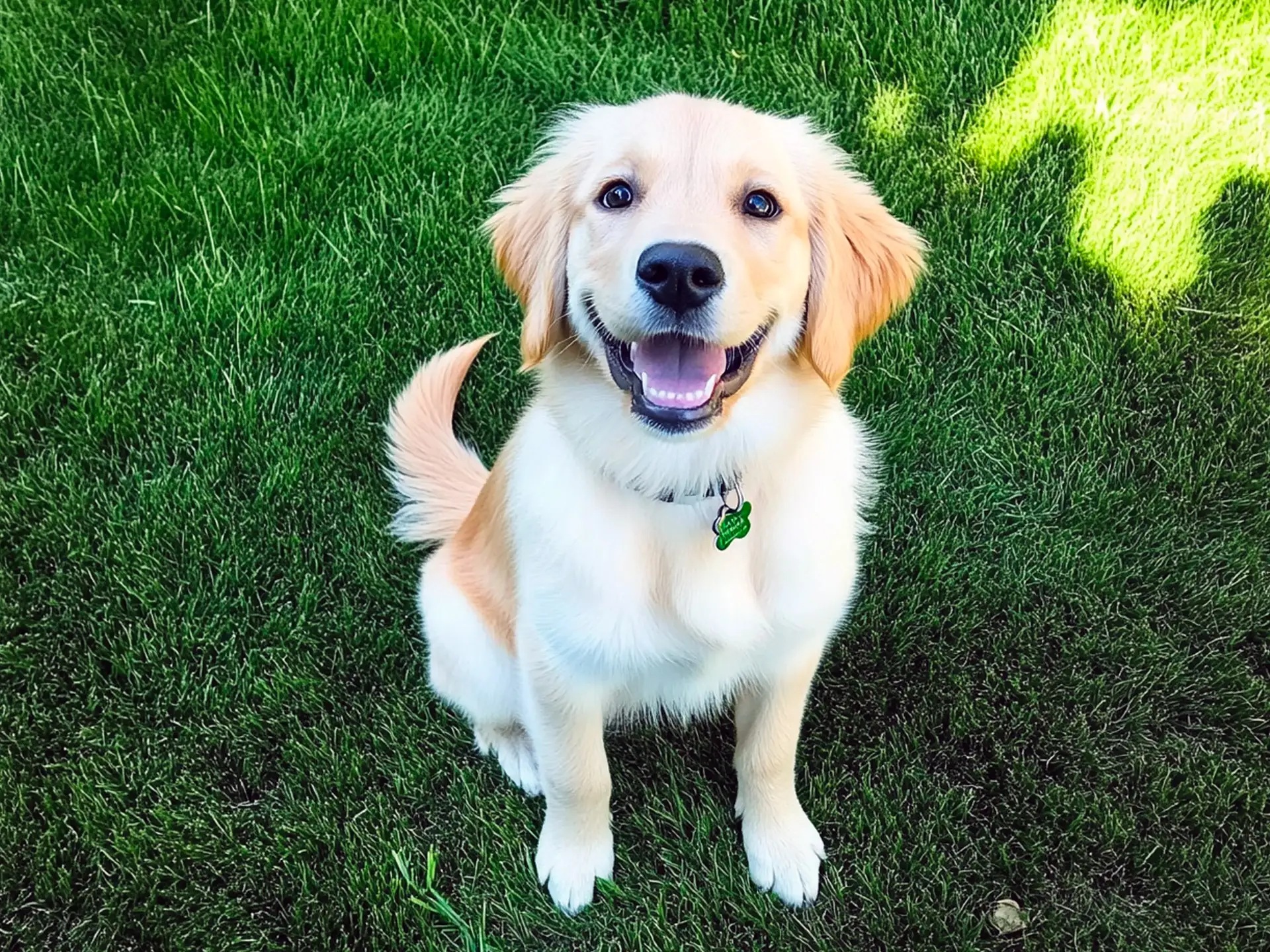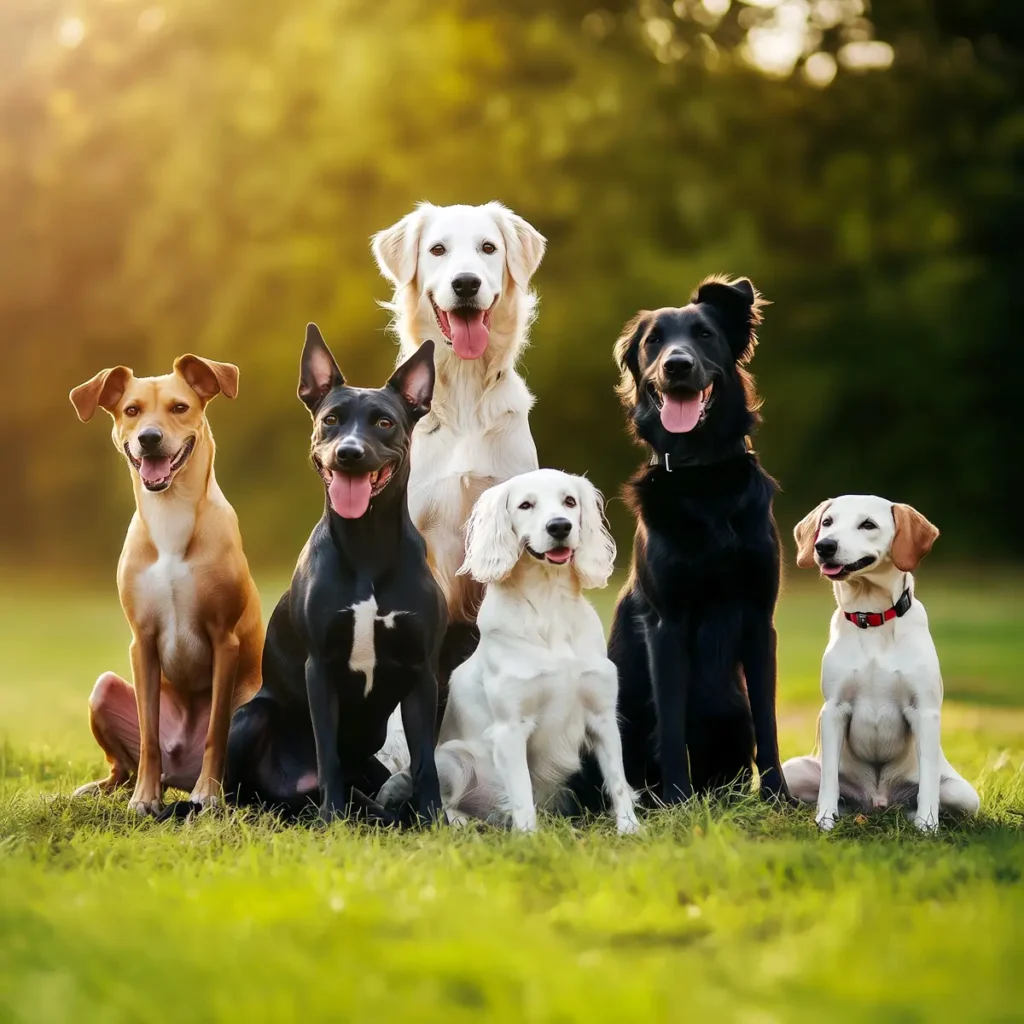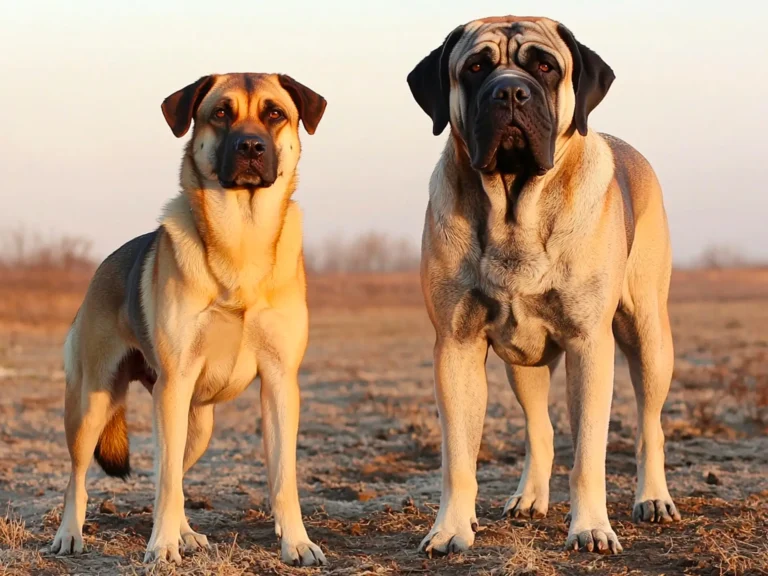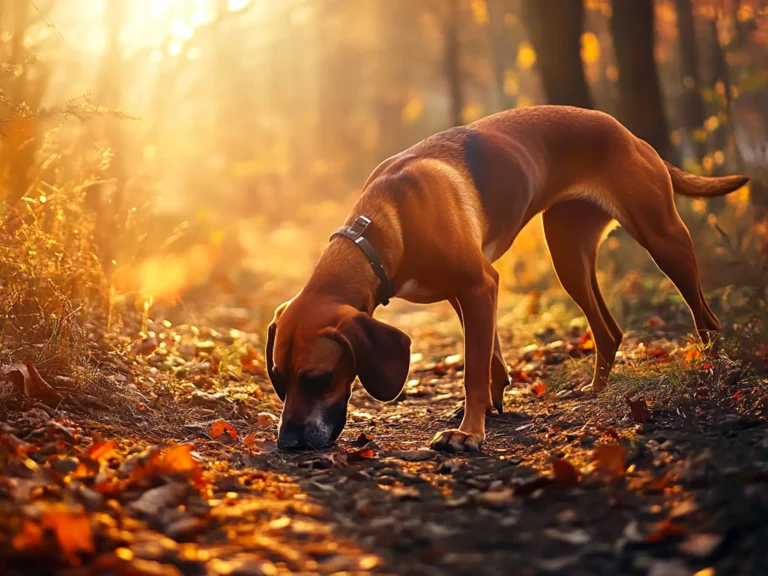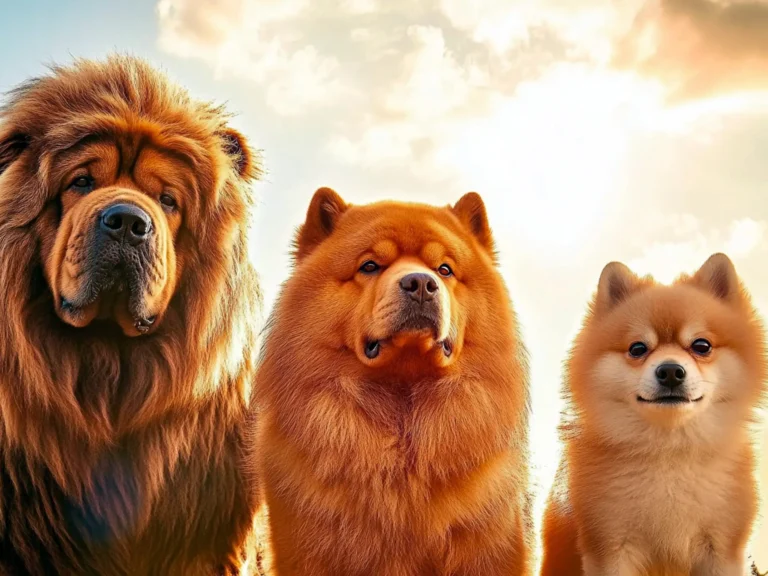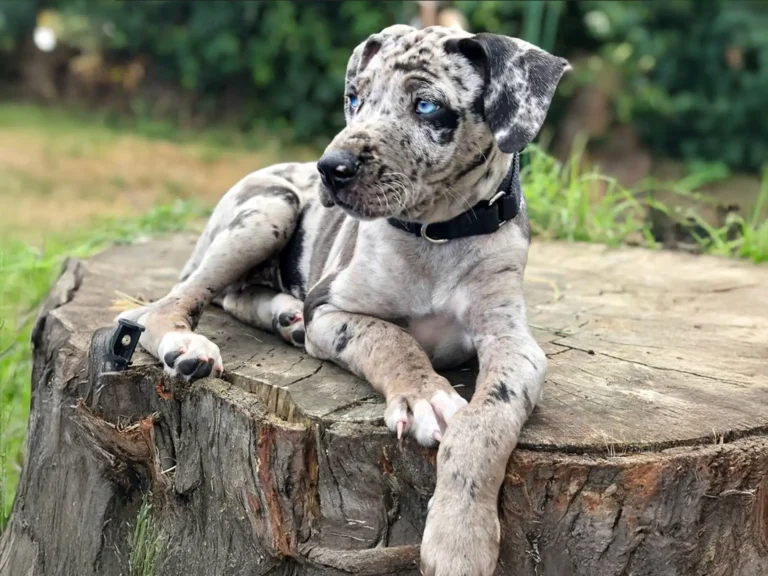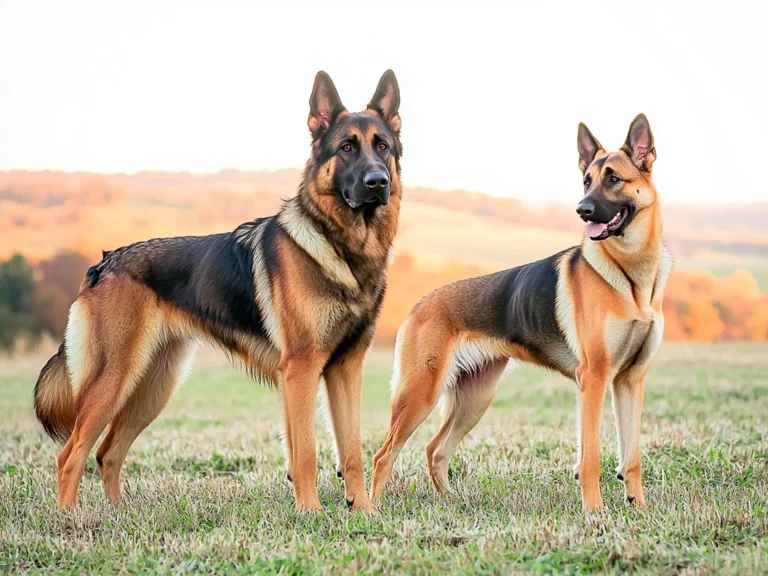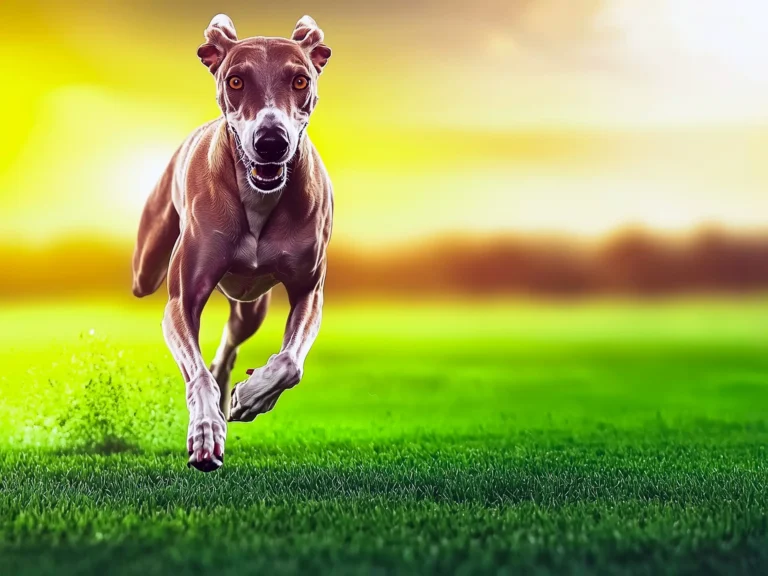So, you’ve decided to bring a dog into your life for the very first time—congratulations! As thrilling as it is to picture morning cuddles and wagging tails, it’s natural to feel a little overwhelmed by the sheer number of breeds out there. According to the American Veterinary Medical Association (AVMA), around 45% of U.S. households own at least one dog—making them the country’s most popular pet. But with popularity comes variety, and choosing the best dog breeds for first-time owners can feel like a guessing game if you’re not sure where to start.
That’s where this guide comes in. We’ll walk you through everything you need to know, from essential traits like temperament and grooming needs to practical concerns such as exercise and budget. Each breed we discuss checks those beginner-friendly boxes in different ways, whether you’re in a studio apartment, a suburban home, or somewhere in between.
Keep in mind, there’s no one-size-fits-all approach to picking a dog. Your ideal companion hinges on factors like your schedule, energy level, and available space. Ready to find a new best friend who’ll stick with you through every laugh, walk, and milestone? Let’s dive into the details and help you discover the perfect pooch for your first foray into dog ownership!
Why Choosing the Right Breed Matters
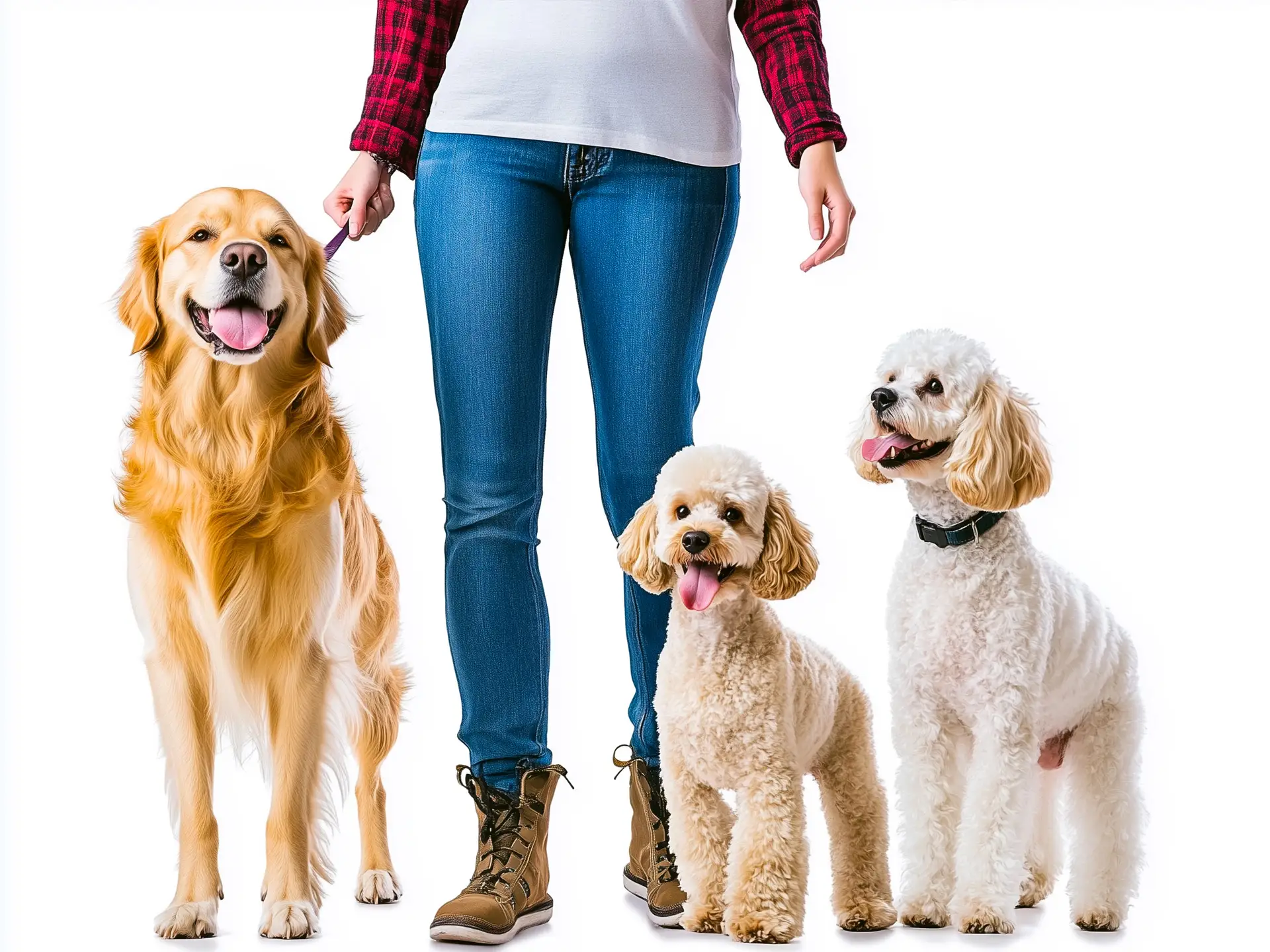
Picking the right dog breed can make or break your pet-owning experience. While all dogs need affection, training, and basic care, some breeds are more forgiving of a newbie’s learning curve. These dogs often have lower exercise requirements, are more adaptable, and boast temperaments that are easy to handle and train.
Here are some reasons why your breed choice matters:
- Temperament: A calm, friendly dog is easier for new owners to handle.
- Grooming & Shedding: High-maintenance coats can be overwhelming, especially if you’re not used to frequent grooming.
- Exercise Needs: Dogs with extreme energy demands can be too challenging for individuals with busy schedules.
- Size & Living Situation: Apartment living vs. having a large yard is a critical factor in choosing a suitable breed.
By selecting a breed that aligns with your living conditions and lifestyle, you increase the likelihood of a harmonious relationship that benefits both you and your dog.
Key Considerations for First-Time Dog Owners
Before diving into the top dog breeds for novices, let’s highlight some essential factors to consider:
- Lifestyle Compatibility
- If you live an active life, a breed with higher energy might suit you. If you prefer a relaxed environment, choose a calmer dog.
- Space Constraints
- Those in smaller homes or apartments often do better with small to medium dog breeds that don’t require huge backyards.
- Exercise Requirements
- Some dogs need just a daily walk, while others require vigorous exercise, mental stimulation, and room to roam.
- Grooming & Shedding
- If you prefer minimal housekeeping, lean toward low-shedding or hypoallergenic breeds.
- Training Ease
- Breeds with a reputation for intelligence and eagerness to please make training sessions more rewarding and less stressful.
- Budget
- Owning a dog involves more than just adoption fees. Factor in veterinary care, food, grooming, and potential training costs.
By focusing on these points, you’ll be better prepared to welcome a furry friend into your life. The more research and preparation you do beforehand, the smoother the transition into dog ownership will be.
Top 20 Best Dog Breeds for First-Time Owners
Below is a detailed list of the 20 best dog breeds for first-time owners. We’ll dive into each breed’s temperament, grooming needs, and why they make fantastic companions for beginners.
1. Golden Retriever
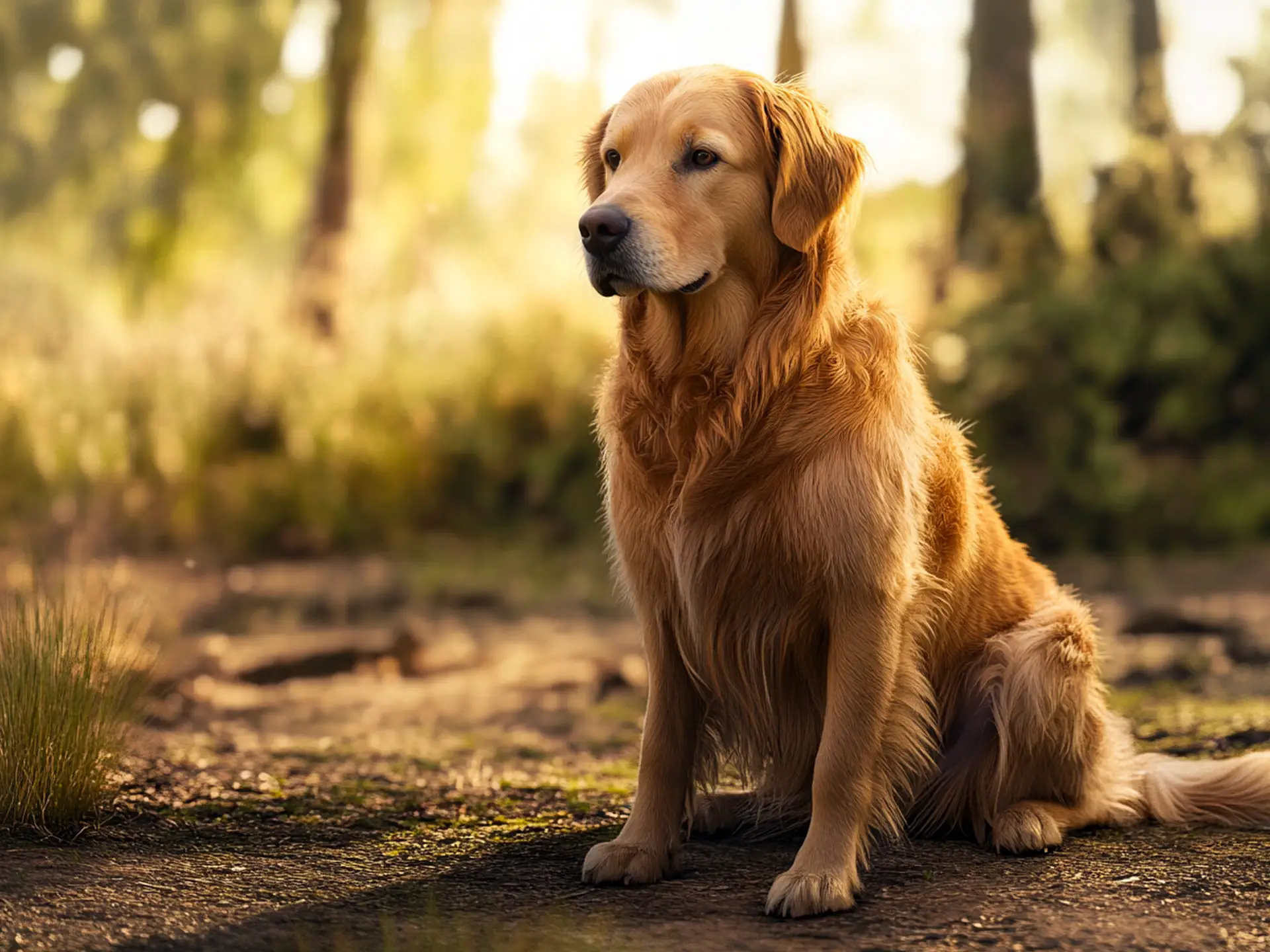
Temperament: Golden Retrievers are famously friendly, loyal, and easy to train. They’re known for their patience and gentleness, making them one of the best dog breeds for families with children.
Grooming: Moderate to high shedding. Regular brushing is a must to control loose hair, but professional grooming is usually only needed occasionally.
Exercise Needs: Golden Retrievers are energetic. A good daily walk or play session is necessary, along with mental stimulation like puzzle toys.
Why They’re Great for Beginners: Their eagerness to please makes them straightforward to train. They’re also highly social and adaptable, fitting into most family dynamics.
2. Labrador Retriever
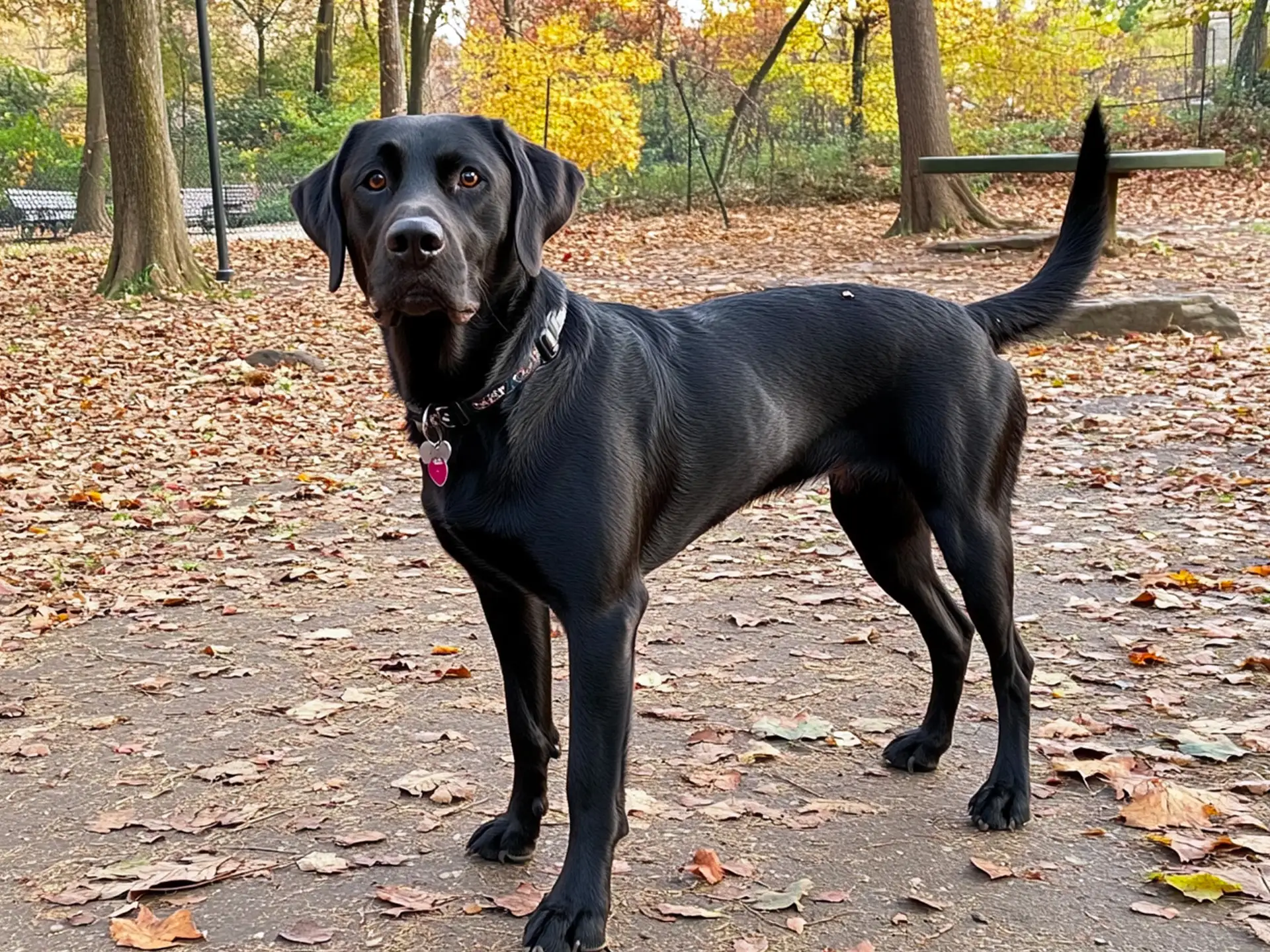
Temperament: Labrador Retrievers are outgoing, affectionate, and great with kids. They love being a part of the family and are typically friendly toward strangers and other pets.
Grooming: Labs have a short, dense coat that does shed but is relatively easy to maintain with weekly brushing.
Exercise Needs: They require moderate to high activity—think daily walks, fetch sessions, or swimming.
Why They’re Great for Beginners: Labs are intelligent, people-oriented, and adapt well to new environments. They thrive on positive reinforcement, making training less challenging.
3. Cavalier King Charles Spaniel
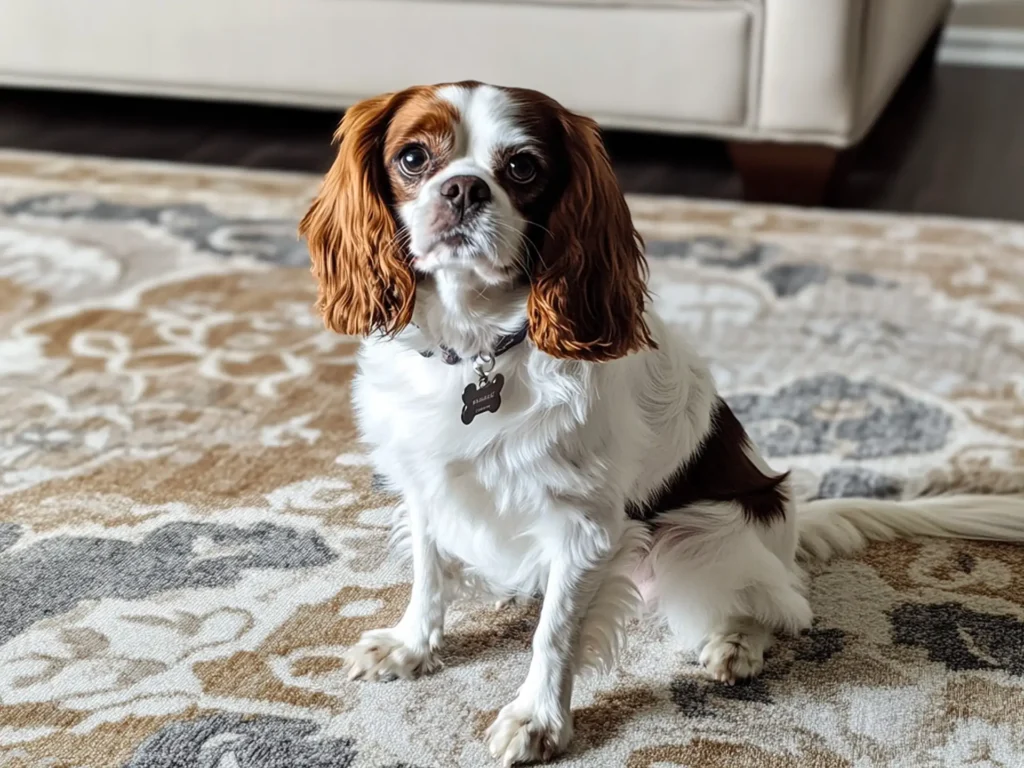
Temperament: Gentle, affectionate, and adaptable, Cavaliers are perfect lap dogs. They bond strongly with their families and are excellent with kids and seniors.
Grooming: Their silky coat needs brushing a few times a week to prevent tangles. They shed moderately year-round.
Exercise Needs: A couple of short walks and some indoor playtime usually suffice. They’re not overly energetic.
Why They’re Great for Beginners: Their calm demeanor and smaller size make them ideal for apartment living. They’re also very eager to please, which simplifies training.
4. Poodle (Toy, Miniature, or Standard)
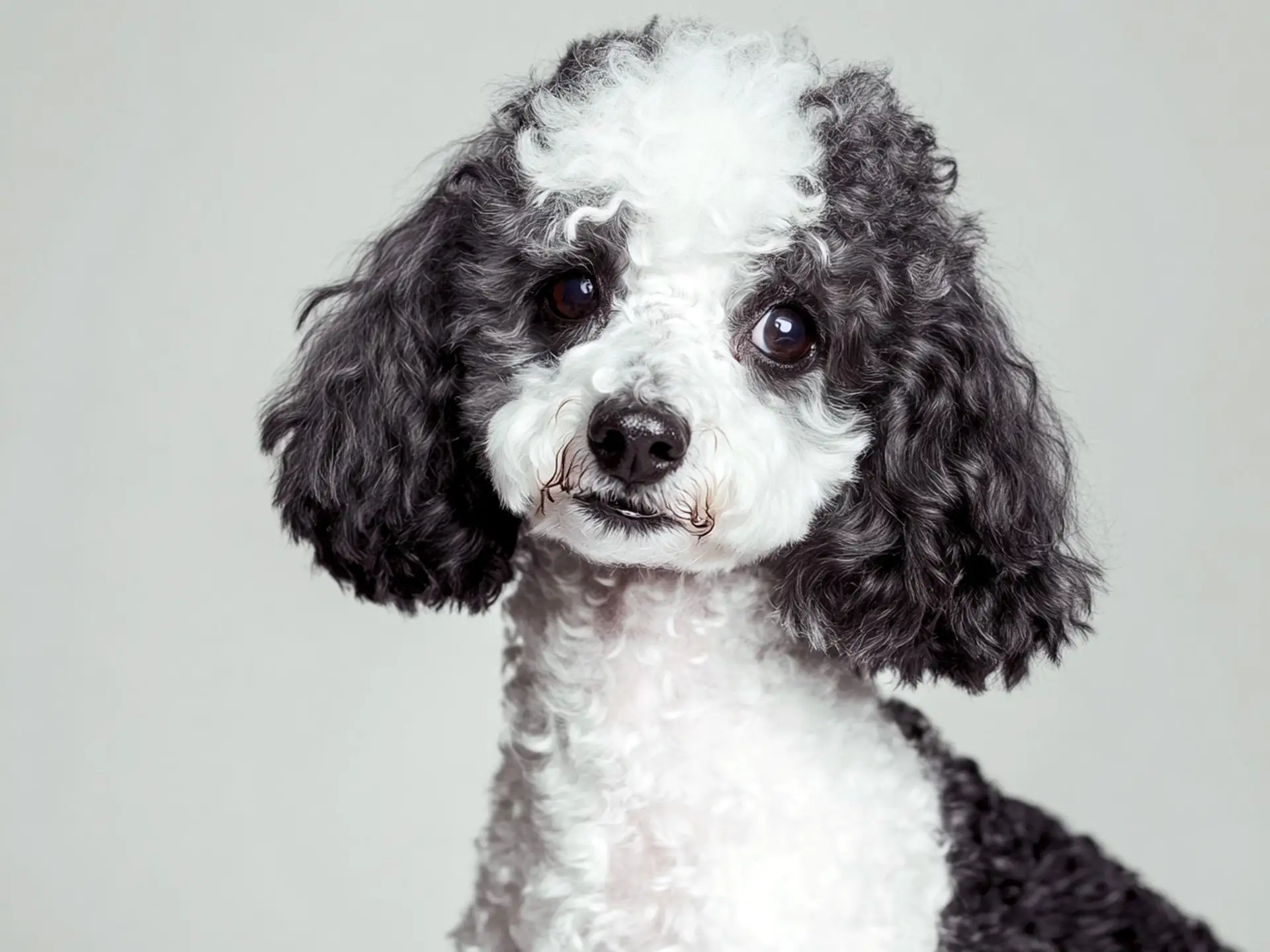
Temperament: Poodles are exceptionally smart and can be trained to do just about anything with the right approach. They’re generally friendly, although socialization is key to preventing shyness.
Grooming: Poodles are low-shedding but require regular grooming or professional trims every 4-6 weeks.
Exercise Needs: Vary by size. Standard Poodles need more exercise than the Toy or Miniature versions, but all benefit from daily walks and mental stimulation.
Why They’re Great for Beginners: Their intelligence makes training easier. Plus, the low-shedding coat is a huge bonus for those concerned about allergies or cleaning up fur.
5. Shih Tzu
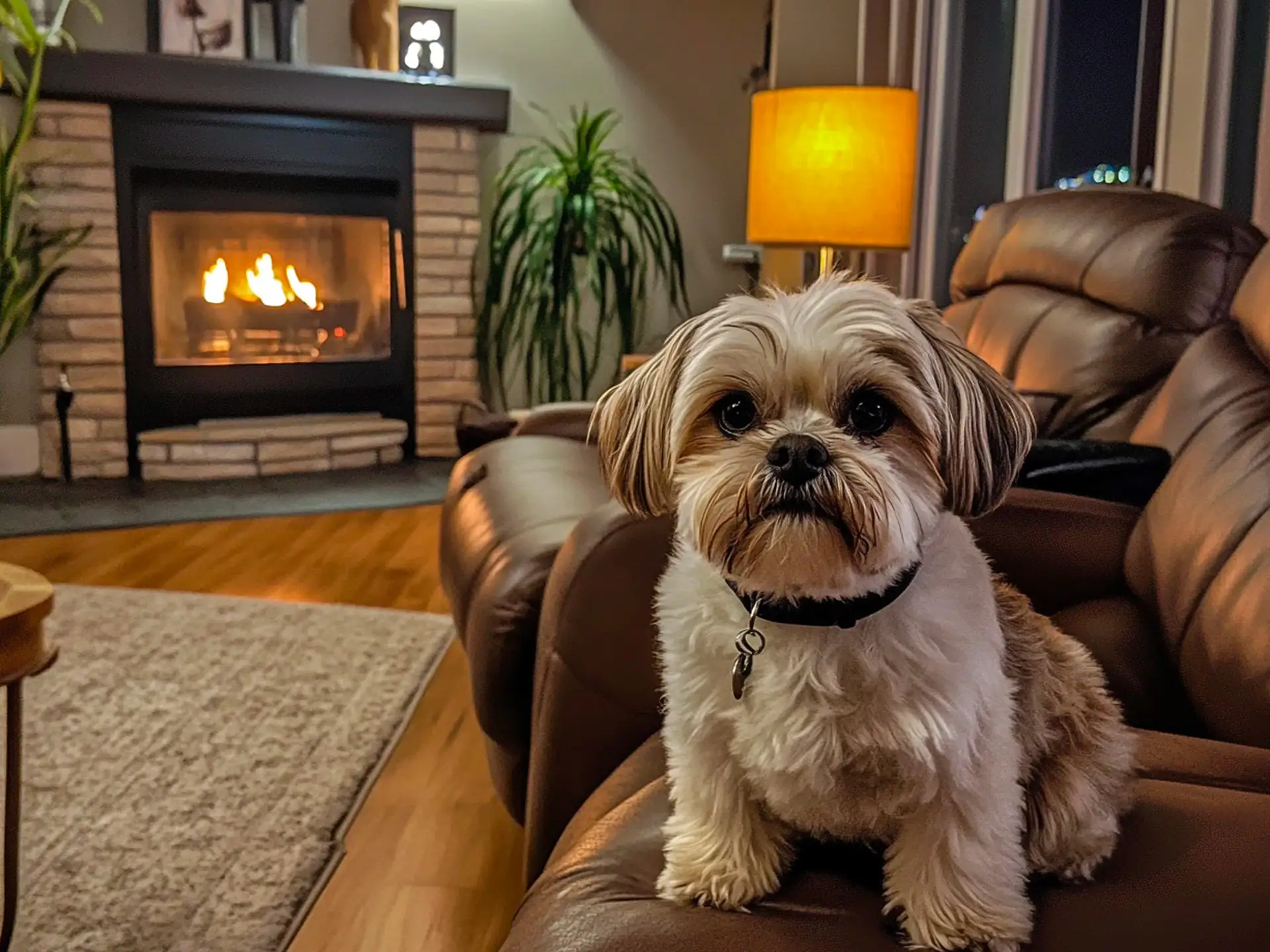
Temperament: Shih Tzus are affectionate, outgoing, and love being lap dogs. They’re excellent for people who want a cuddly companion rather than a high-energy playmate.
Grooming: They have a long, luxurious coat that needs consistent brushing. Many owners opt for a short “puppy cut” to reduce grooming frequency.
Exercise Needs: Minimal. A leisurely walk around the neighborhood and some indoor play keep them happy.
Why They’re Great for Beginners: Their small size and moderate exercise needs fit well into apartment living. They’re also social and adapt to family members quickly.
6. Bichon Frise
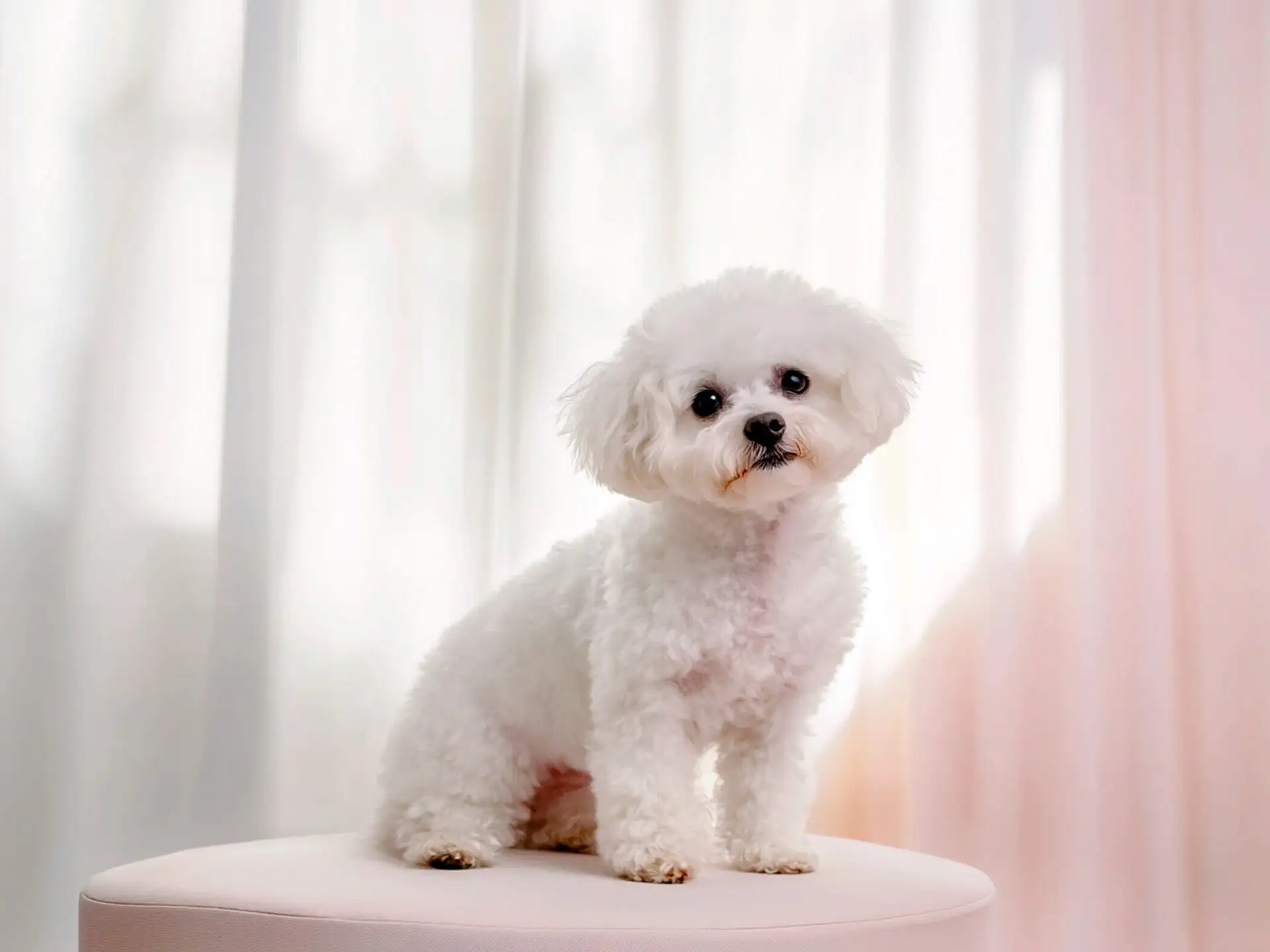
Temperament: Known for their cheerful, playful nature, Bichons are great with children and other pets. They love attention and enjoy being part of family activities.
Grooming: A high-maintenance coat that doesn’t shed much but requires frequent grooming to prevent matting. Many owners take them to professional groomers regularly.
Exercise Needs: Two short walks a day plus some indoor playtime generally suffice.
Why They’re Great for Beginners: Their friendly demeanor and manageable energy levels are perfect for novice owners. They’re also good choices if you want a dog that doesn’t shed heavily.
7. Bulldog
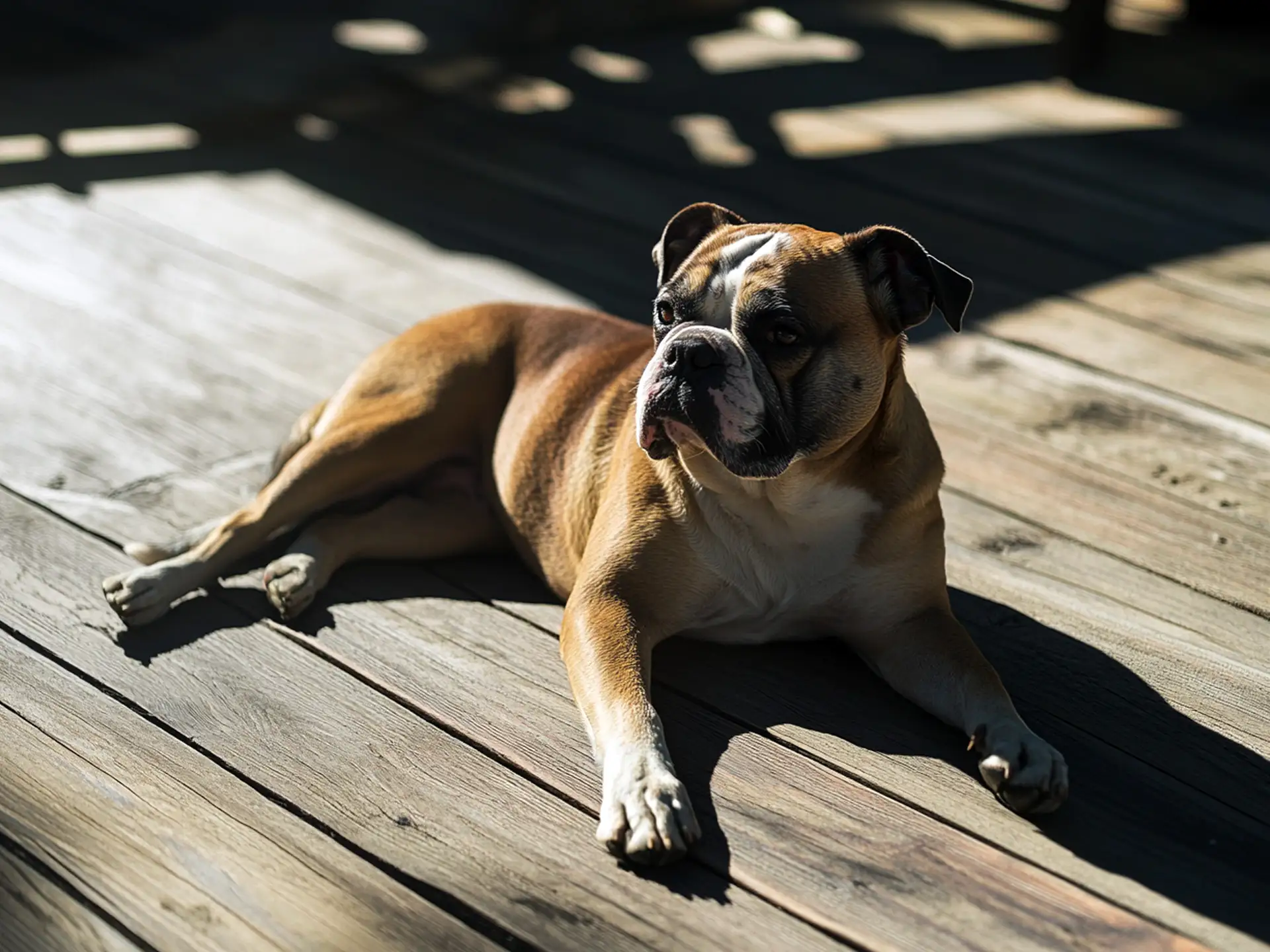
Temperament: Bulldogs are calm, loyal, and often content to lounge around with their owners. They have a stubborn streak but respond well to consistent, positive training.
Grooming: Their short coat is relatively low maintenance, but they do shed moderately. Pay extra attention to cleaning their wrinkles to prevent infections.
Exercise Needs: Low to moderate. Short daily walks are recommended, but they’re not built for endurance activities, especially in hot weather.
Why They’re Great for Beginners: Their relaxed nature makes them a good fit for less active households. They’re known for their loving temperament, making them excellent companions.
8. Beagle
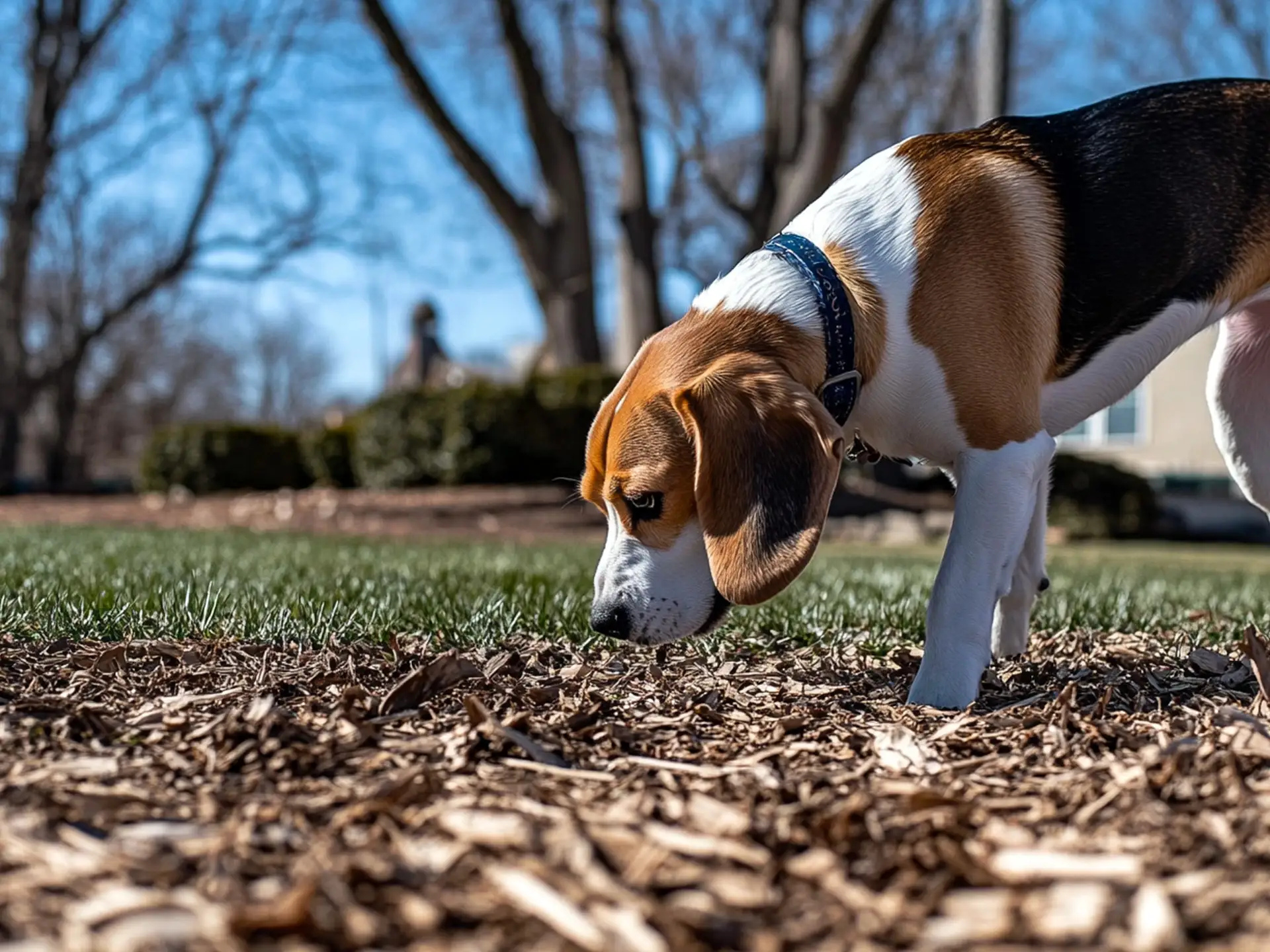
Temperament: Beagles are merry, curious, and love being part of a pack. They’re social animals and can quickly make friends with people and pets alike.
Grooming: Low-maintenance short coat that requires weekly brushing. They do shed, but not excessively.
Exercise Needs: Moderate to high, as they’re scent hounds who love to explore. A fenced yard or daily walks help burn off energy.
Why They’re Great for Beginners: With a bit of patience and consistent training, Beagles can be fantastic pets. Just be prepared for some howling—part of their hound charm.
9. Cocker Spaniel
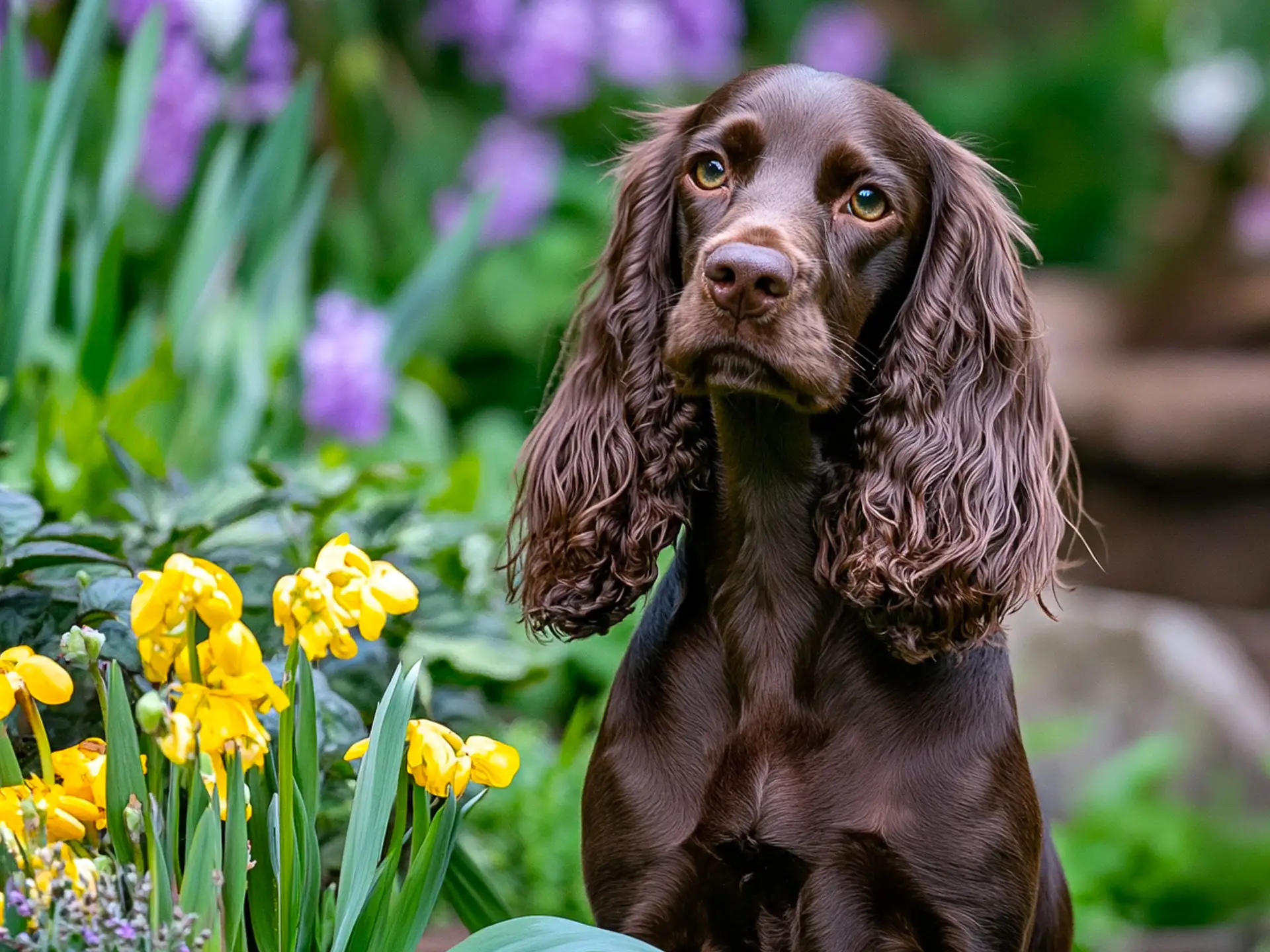
Temperament: Cocker Spaniels are sweet, gentle, and thrive on companionship. They’re good with children but do need socialization to ensure they’re comfortable with strangers.
Grooming: Their silky coat requires regular brushing and trimming. If left untrimmed, they can develop mats and tangles.
Exercise Needs: Moderate. Daily walks combined with some play sessions will keep them happy.
Why They’re Great for Beginners: Easy to train and eager to please, Cocker Spaniels fit well into family life, especially when they get plenty of love and attention.
10. Papillon
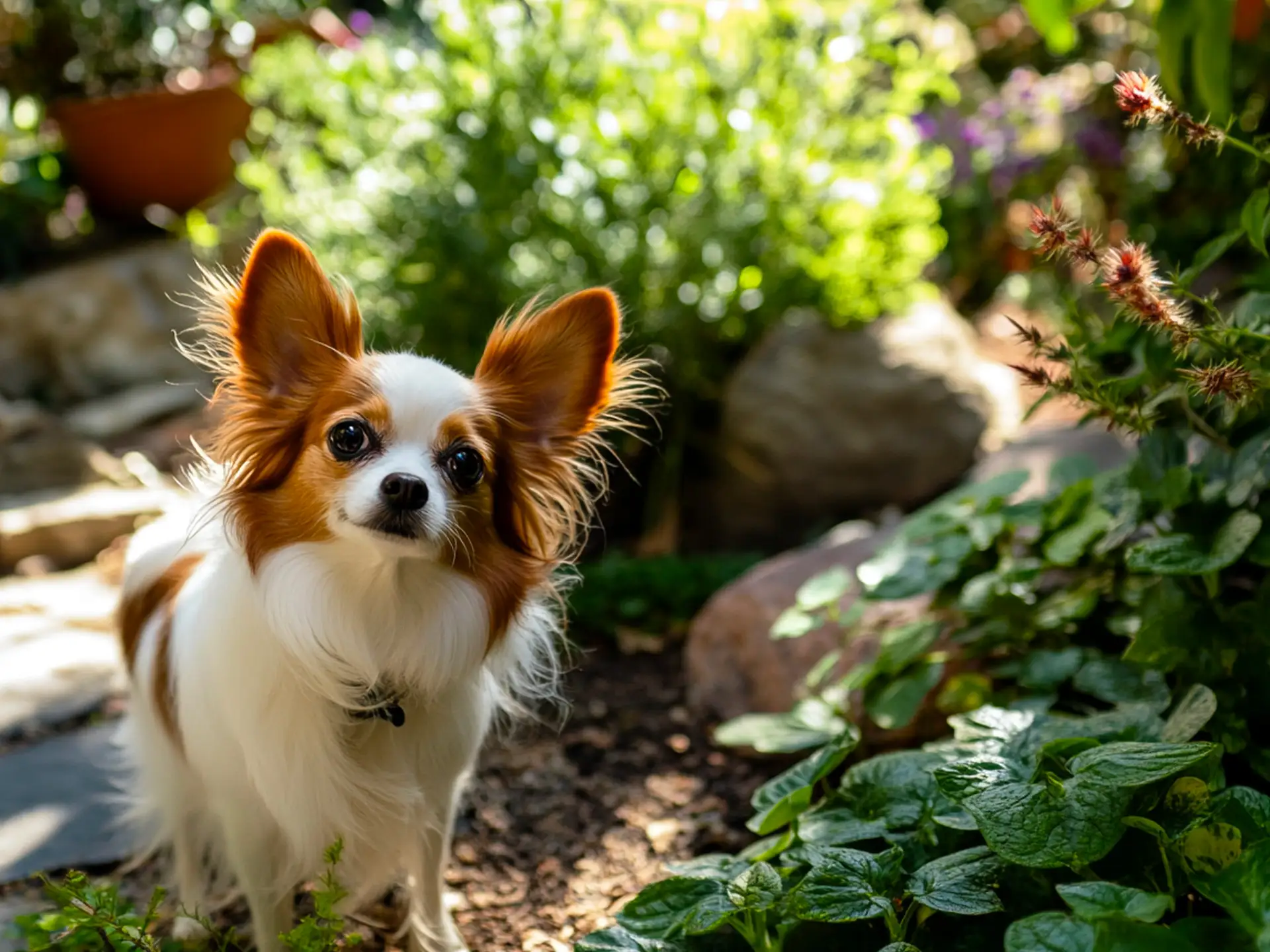
Temperament: Papillons are surprisingly energetic and agile despite their tiny size. They’re intelligent, curious, and love to engage in activities.
Grooming: Their long, silky coat needs moderate brushing a few times a week. Shedding is moderate but manageable.
Exercise Needs: They need short bursts of exercise and mental stimulation. Agility training or puzzle toys work wonders for their active minds.
Why They’re Great for Beginners: Papillons are eager to learn and can excel in obedience training. They also adapt well to apartments if given sufficient engagement.
11. Pug
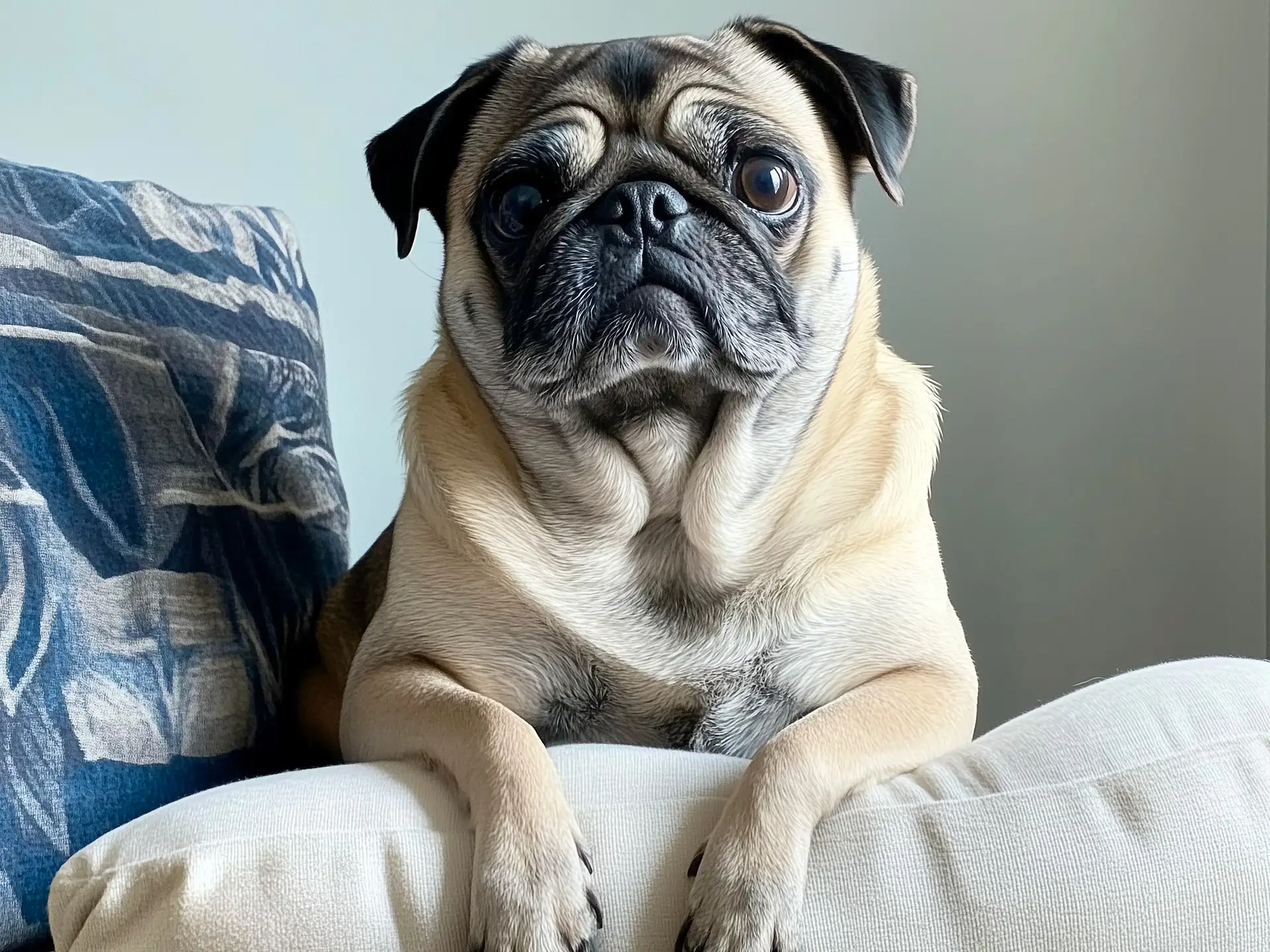
Temperament: Friendly, playful, and known for their comical expressions, Pugs are excellent indoor companions. They love human attention but don’t require exhaustive exercise.
Grooming: Short coat, but they do shed and need regular brushing. Wrinkle care is also essential to prevent skin infections.
Exercise Needs: Low to moderate. Too much strenuous exercise can stress their respiratory system, so short walks are ideal.
Why They’re Great for Beginners: Their laid-back nature and small size make them suitable for apartments. They also get along well with kids and other pets.
12. Boston Terrier
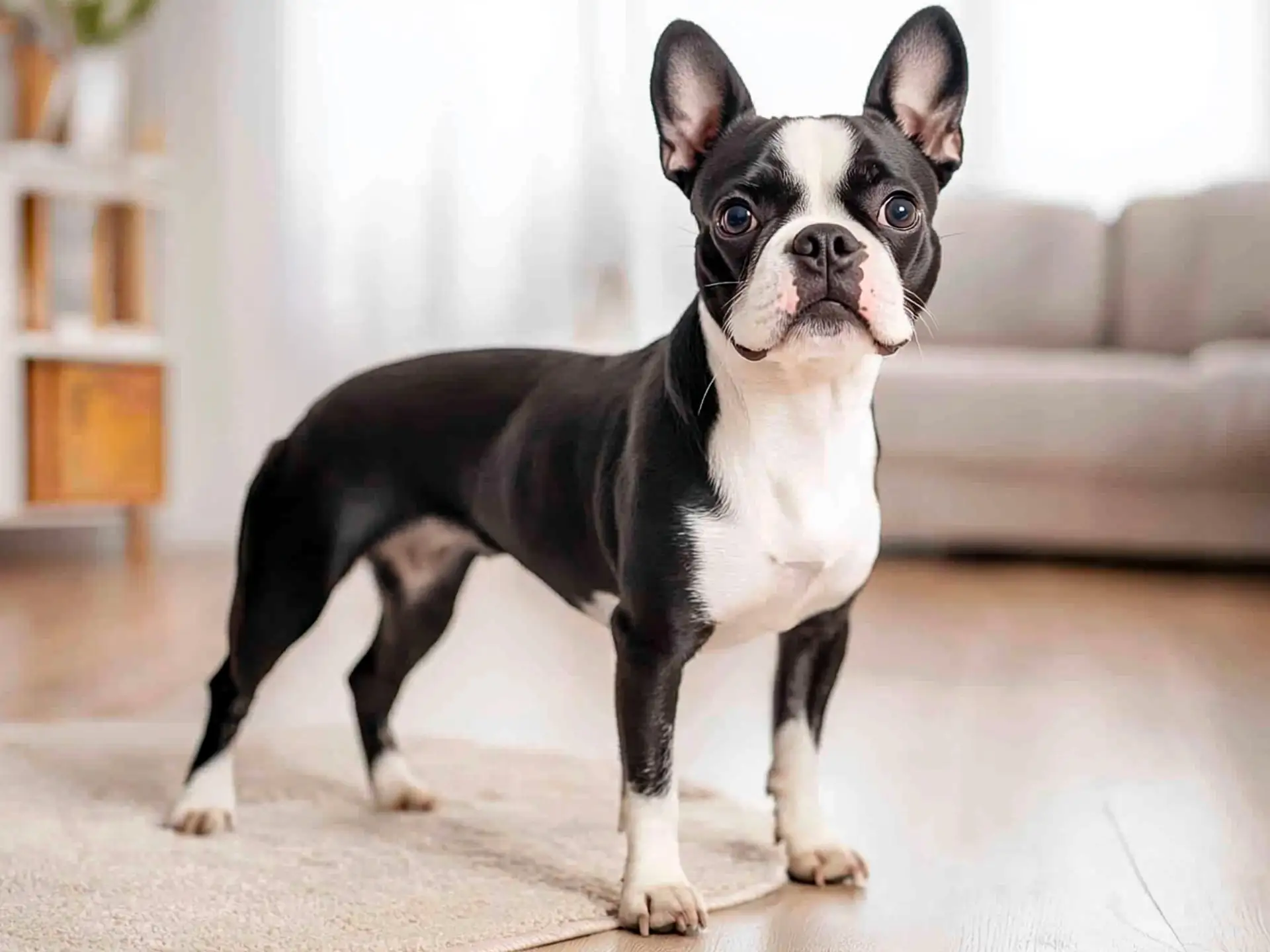
Temperament: Affectionately called the “American Gentleman,” Boston Terriers are sociable, intelligent, and fun-loving. They’re known for their adaptability to various living situations.
Grooming: Easy to maintain short coat, although weekly brushing helps minimize shedding.
Exercise Needs: Moderate. They enjoy play sessions and walks but are not usually high-strung.
Why They’re Great for Beginners: Their pleasant disposition and trainability, combined with a compact size, make them a solid option for first-timers.
13. Dachshund
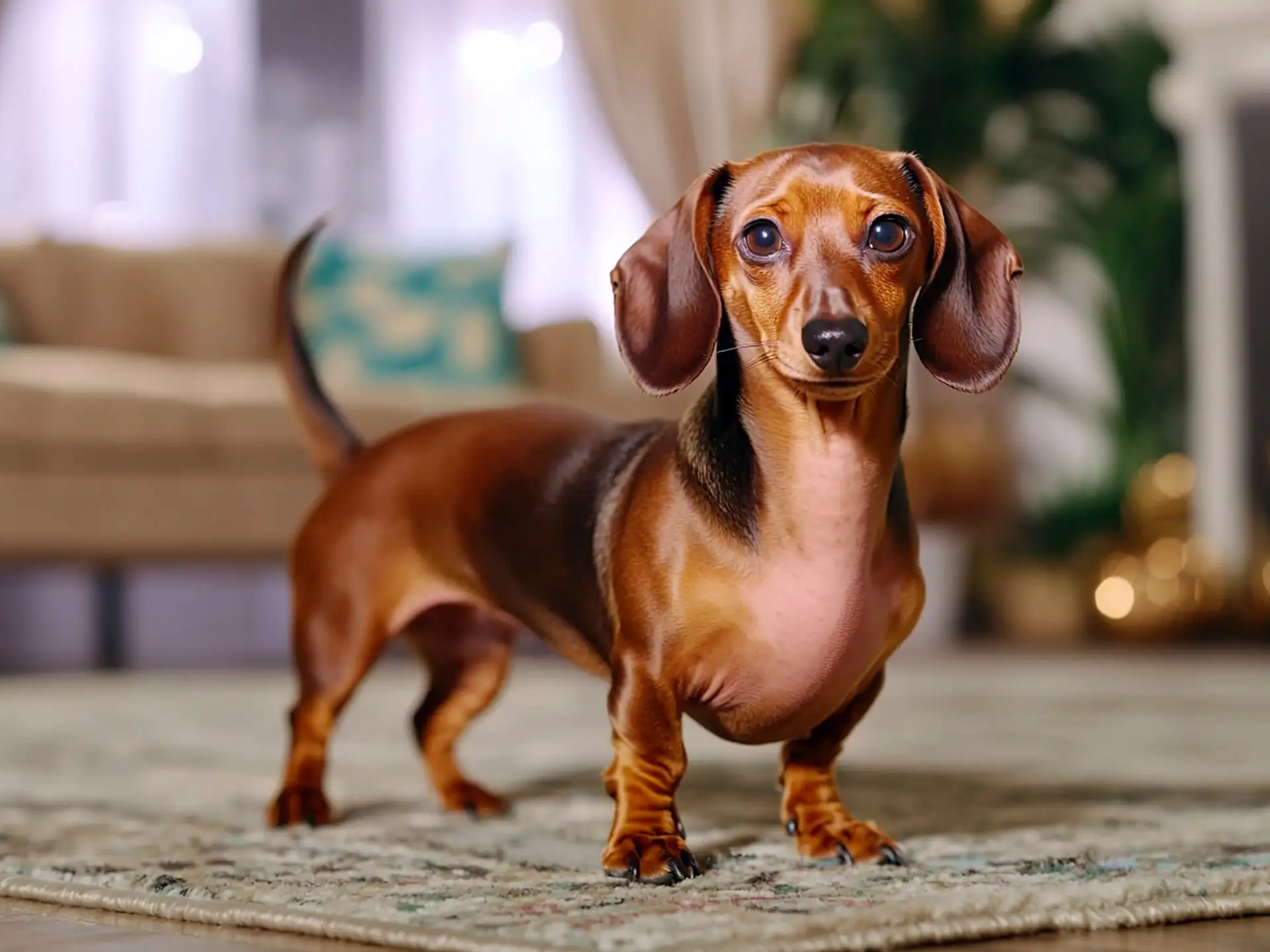
Temperament: Lively, courageous, and sometimes a bit stubborn, Dachshunds love being part of the family. They’re known for their comedic charm and devotion to their owners.
Grooming: Available in short-haired, wire-haired, and long-haired varieties. Grooming needs vary, but none are excessively high-maintenance.
Exercise Needs: Moderate. They do enjoy walks, but their long spine requires careful handling to prevent injuries.
Why They’re Great for Beginners: Dachshunds can adapt to apartment living, and their manageable exercise needs suit many lifestyles. Just be patient with training, as they can be independent thinkers.
14. Greyhound
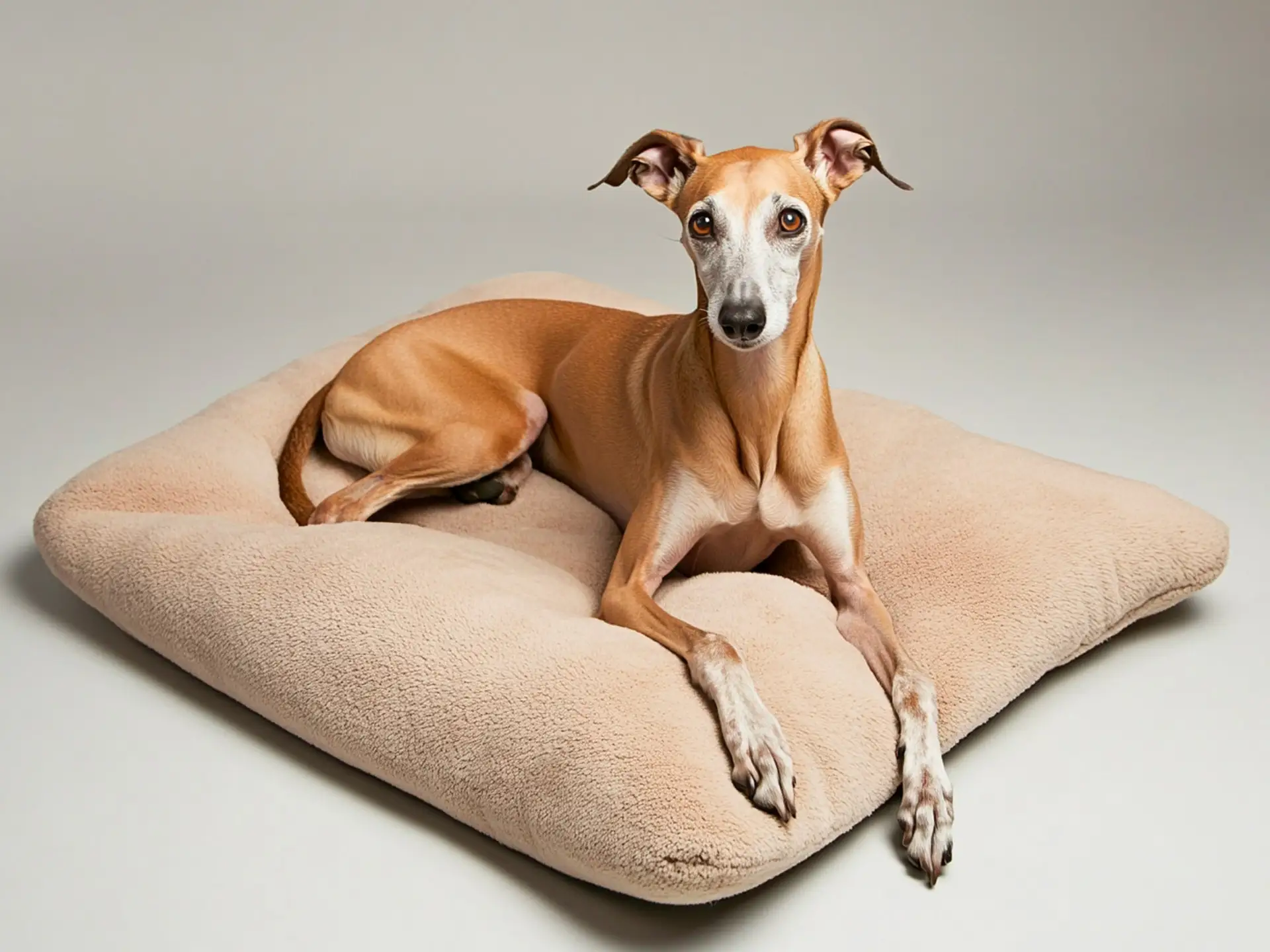
Temperament: Calm, gentle, and surprisingly low-energy for their athletic build. Greyhounds are affectionate with their families and can be quite docile indoors.
Grooming: Short coat that requires minimal maintenance. Weekly brushing or a quick wipe-down is usually enough.
Exercise Needs: Despite their racing background, Greyhounds are often couch potatoes. A daily walk or short sprint in a secure area is sufficient.
Why They’re Great for Beginners: Their calm nature and relatively minimal exercise requirements make them excellent house dogs. They’re also quiet and laid-back, which may surprise many new owners.
15. Havanese
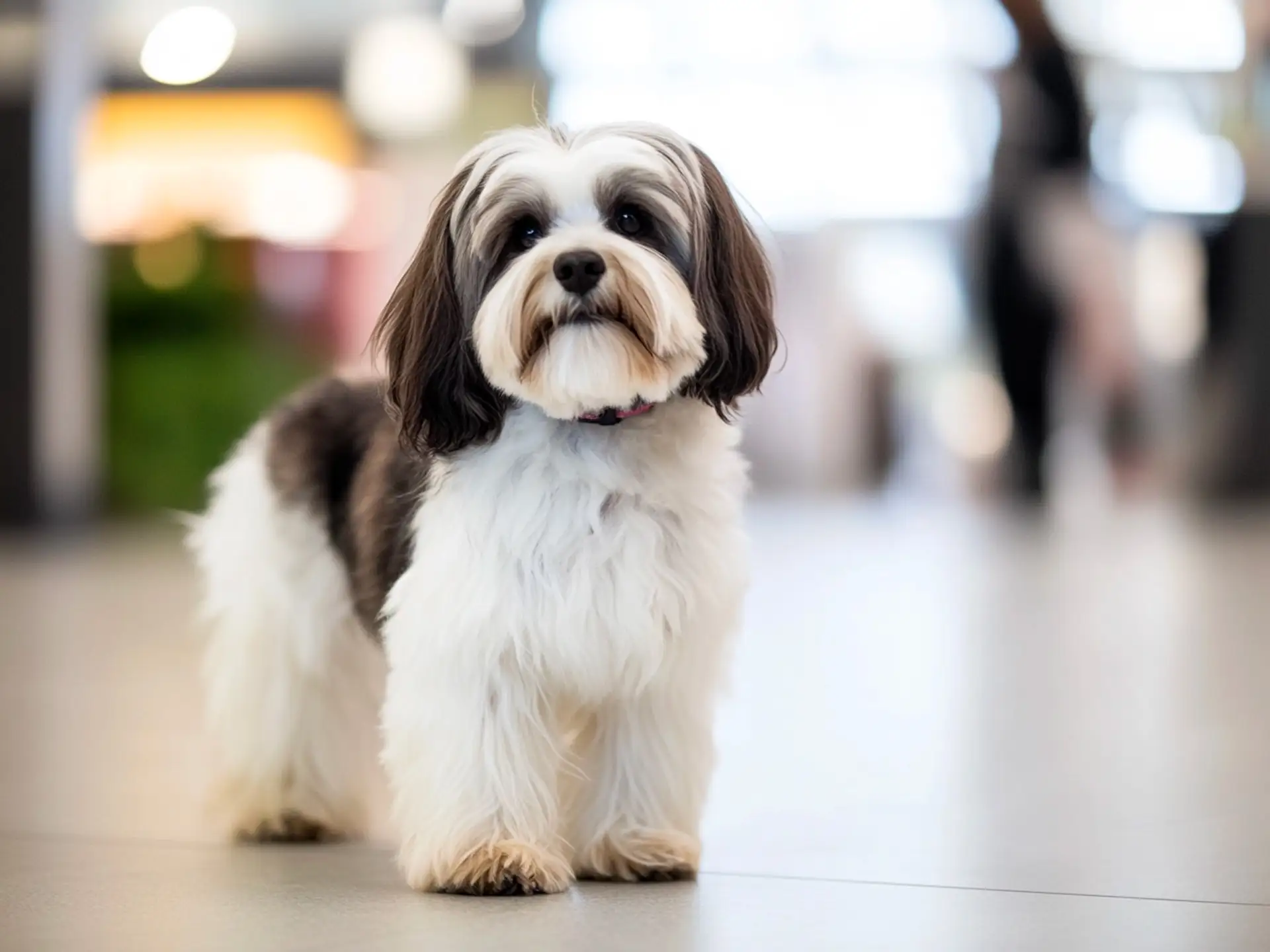
Temperament: Cheerful, affectionate, and sociable, Havanese love spending time with their families. They’re particularly known for being good with children and other pets.
Grooming: A long, silky coat that does not shed much but needs regular brushing. Many owners keep it trimmed short for easier care.
Exercise Needs: Moderate. Short walks and indoor play sessions are typically enough to keep them happy.
Why They’re Great for Beginners: Their small size, friendly nature, and moderate exercise requirements make Havanese excellent for novice owners looking for a loving lap dog.
16. Maltese
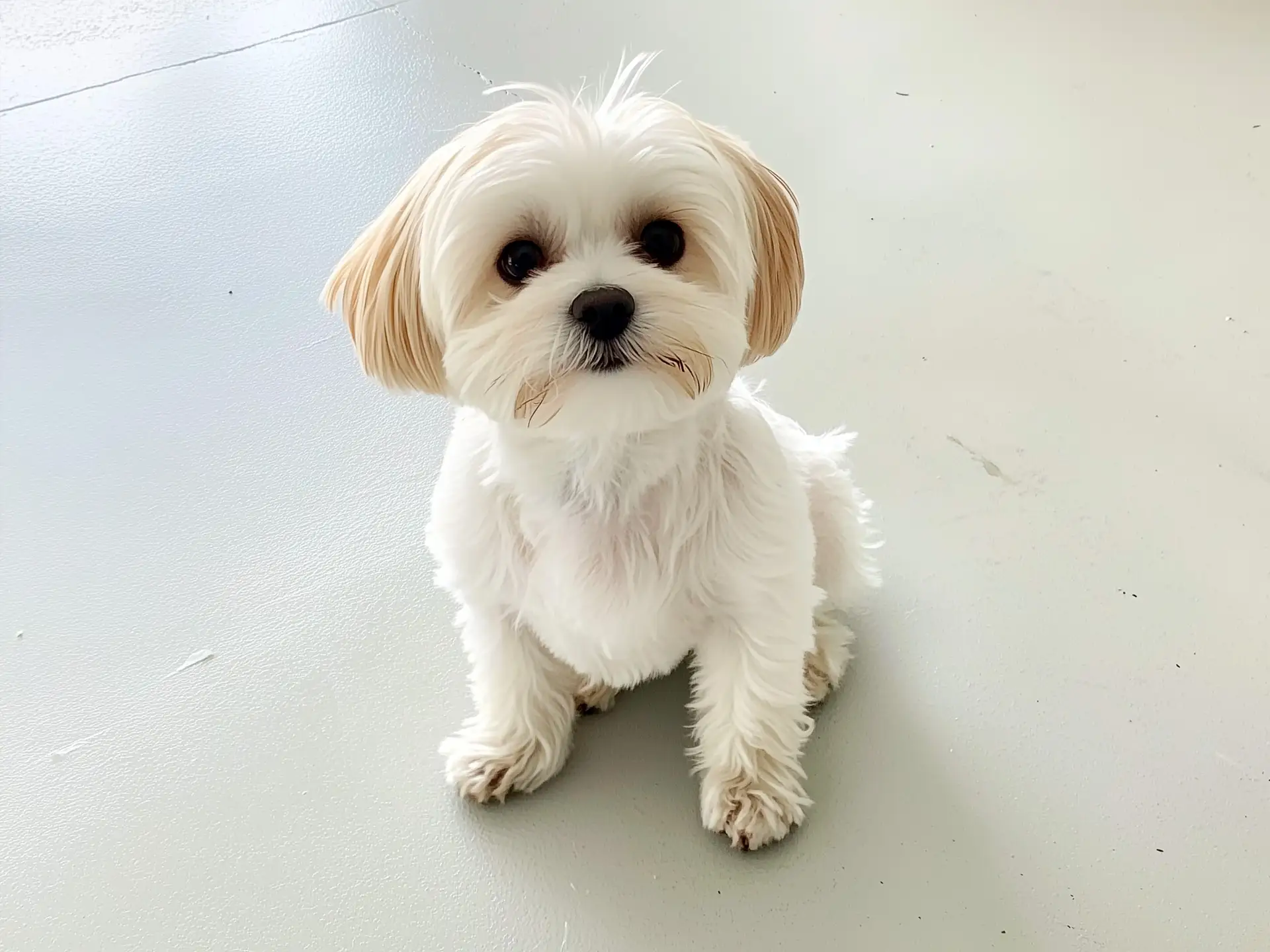
Temperament: Known for their gentle and affectionate personality, Maltese dogs are great companions. They can be energetic when playing but also enjoy cuddling on the sofa.
Grooming: Their luxurious white coat requires frequent brushing and grooming. Many owners choose a puppy cut for easier maintenance.
Exercise Needs: Low to moderate. Short daily walks and indoor play are usually sufficient.
Why They’re Great for Beginners: The Maltese is a loyal breed that forms strong bonds with its owners. With proper grooming habits, they’re fairly low-maintenance in other respects.
17. French Bulldog
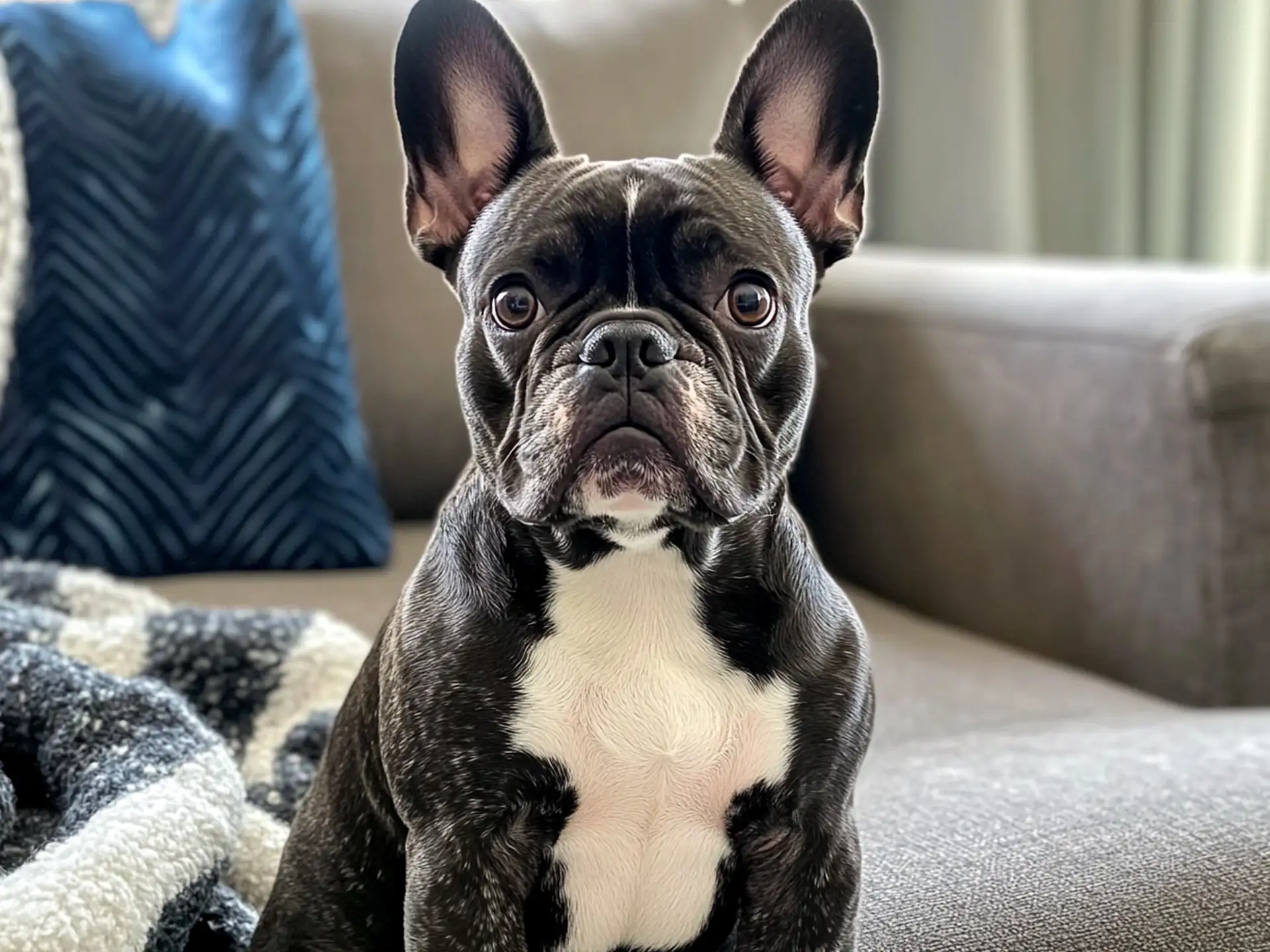
Temperament: Adaptable, comical, and devoted, Frenchies are great companions for those looking for a relaxed yet friendly dog.
Grooming: Low-maintenance coat, but they do shed. Clean their facial folds regularly to prevent irritation.
Exercise Needs: Low. Short walks and interactive play are enough to keep them fit.
Why They’re Great for Beginners: French Bulldogs are excellent for apartment living due to their minimal exercise needs. They’re also famously good with children and other pets.
18. Miniature Schnauzer
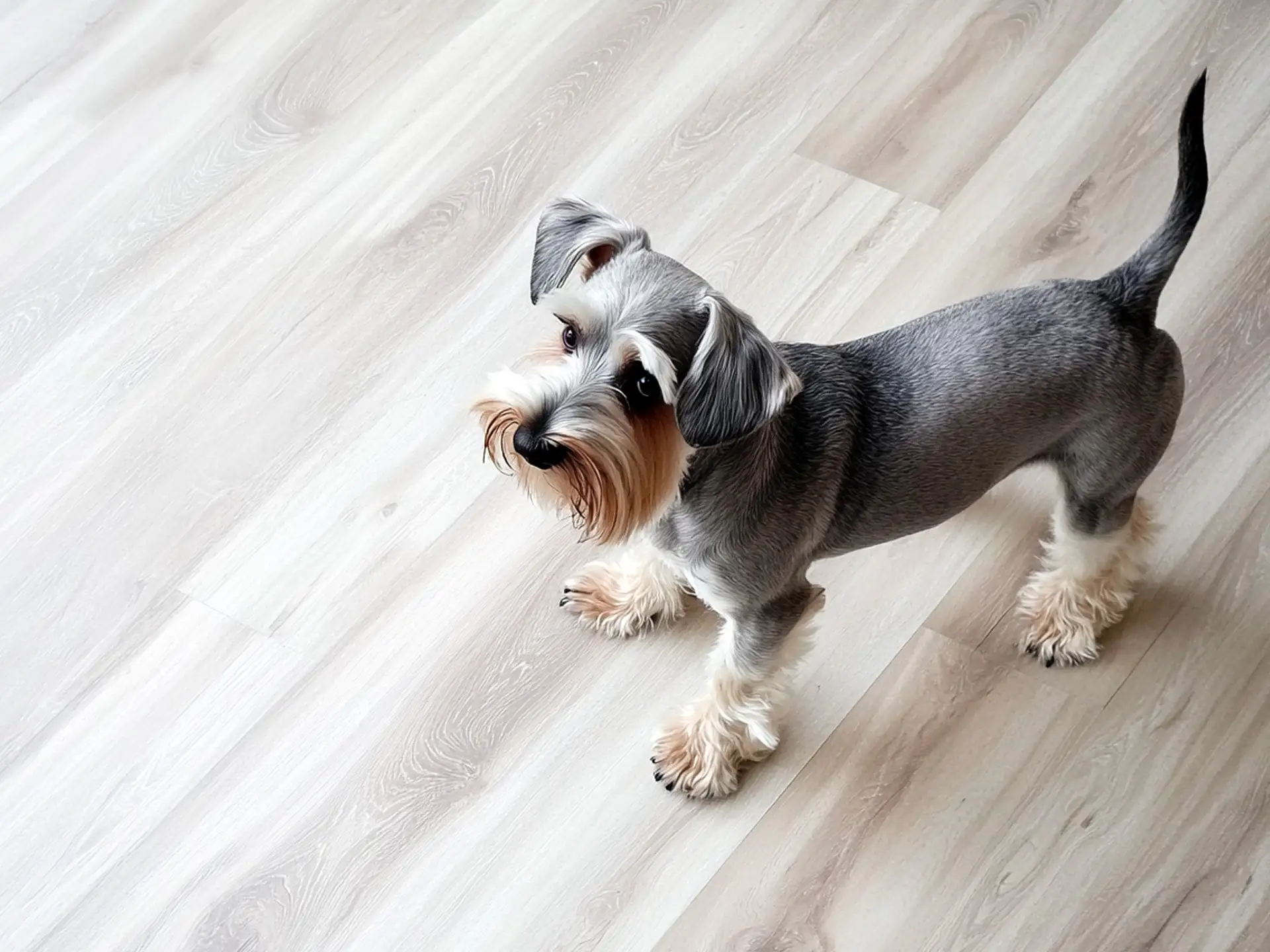
Temperament: Alert, friendly, and quick to learn, Miniature Schnauzers love being involved in family activities. They have a playful demeanor but also enjoy downtime.
Grooming: They’re low-shedding but need regular trimming, especially around the face and legs, to maintain their iconic look.
Exercise Needs: Moderate. A couple of walks a day and some playtime help meet their energy levels.
Why They’re Great for Beginners: Intelligent and trainable, Miniature Schnauzers adapt to different living conditions. Their beard and eyebrows might be high-maintenance, but otherwise, they’re quite beginner-friendly.
19. Yorkshire Terrier
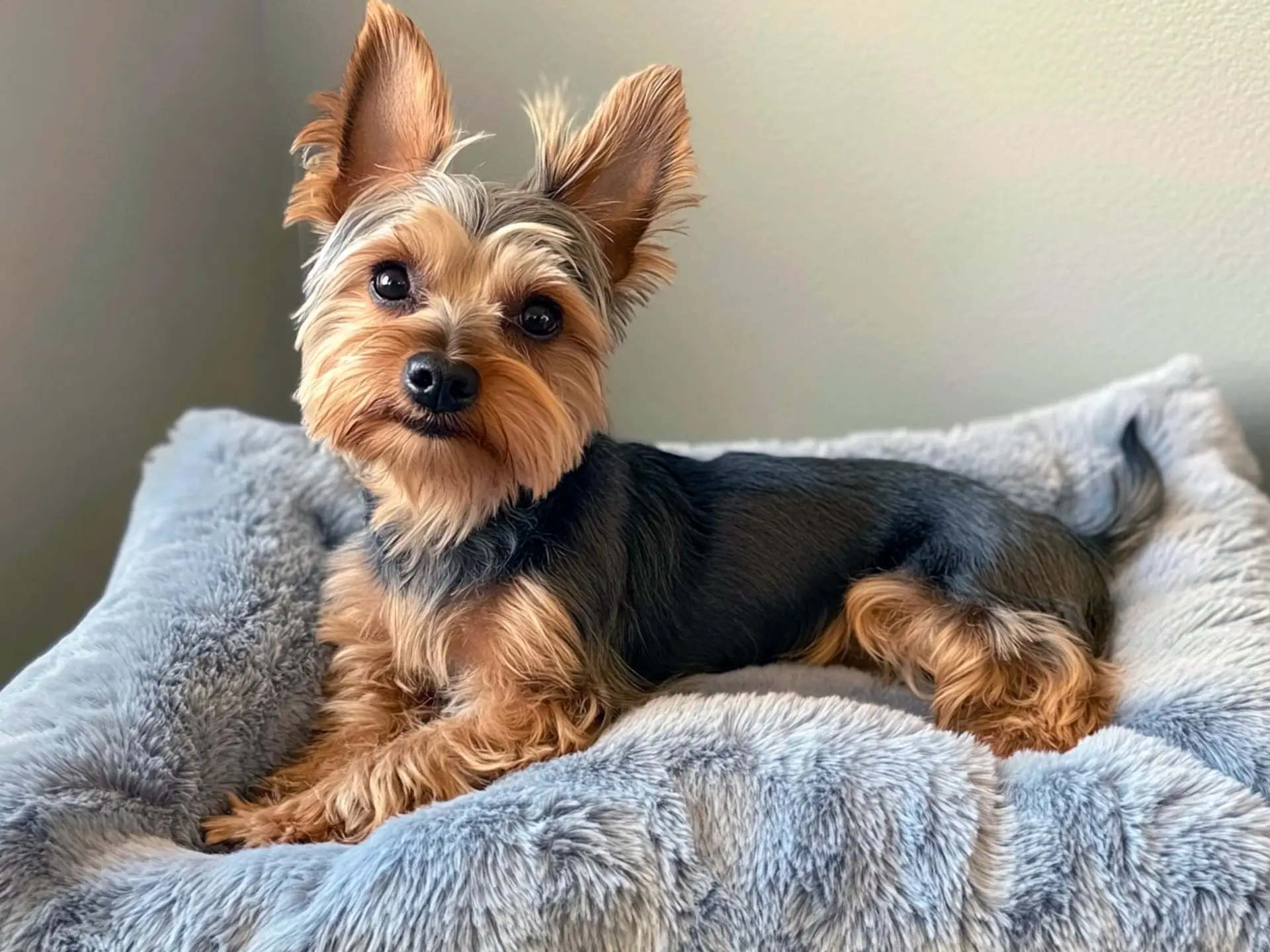
Temperament: Yorkies are bold, curious, and love being the center of attention. They might be small, but their personalities are anything but.
Grooming: A long, silky coat that requires daily brushing if kept long. Many owners trim it short for convenience.
Exercise Needs: Low to moderate. Short walks and indoor games typically suffice.
Why They’re Great for Beginners: Their small size and adaptability make them great apartment dogs. They thrive on companionship and respond well to positive training.
20. Whippet
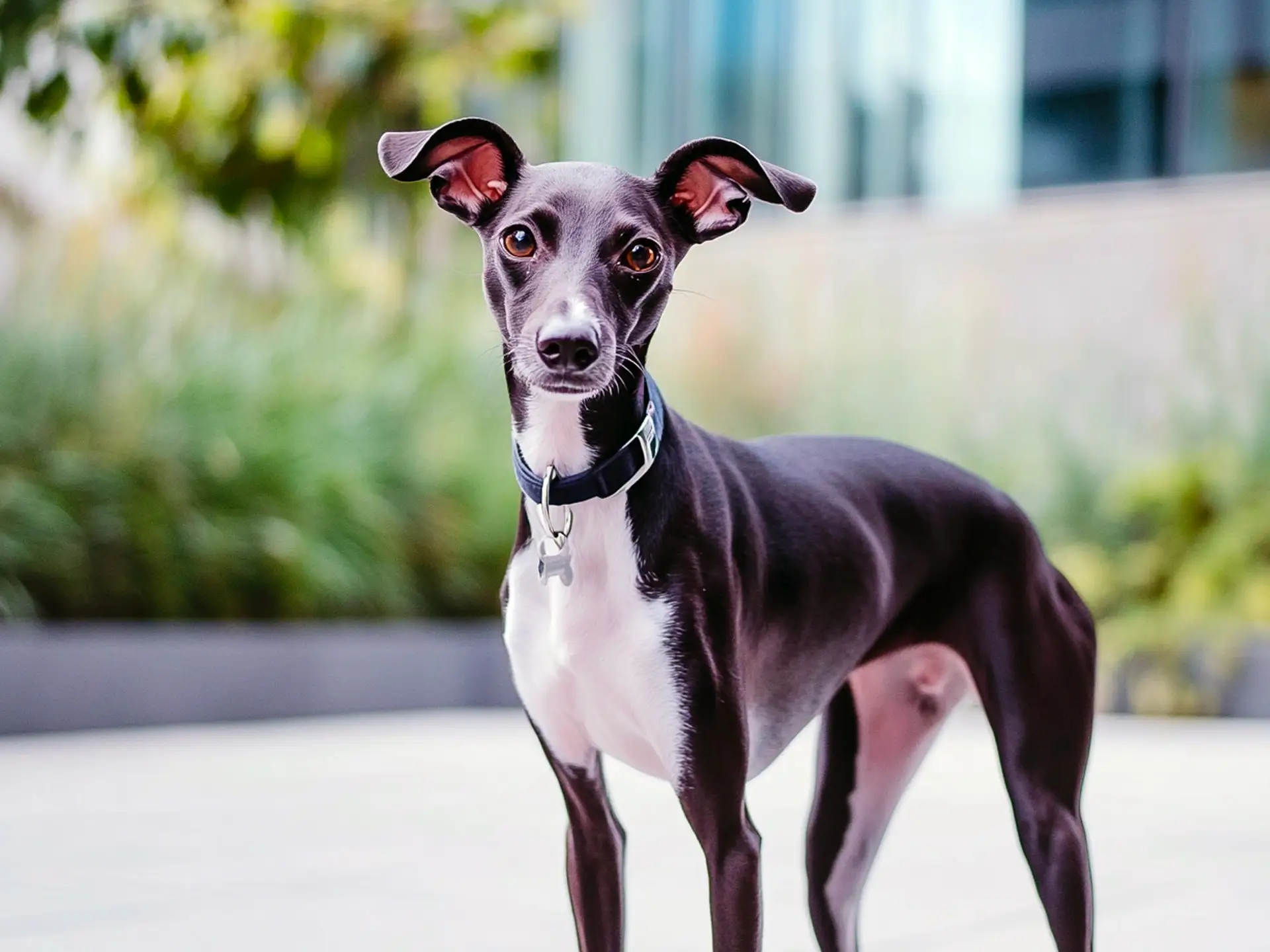
Temperament: Similar to Greyhounds, Whippets are gentle, calm, and often enjoy lounging around the house. They bond closely with their families.
Grooming: Short coat with minimal shedding. A quick weekly brush is all they need.
Exercise Needs: A daily walk and the occasional sprint in a secure area will keep them content.
Why They’re Great for Beginners: Whippets are quiet, adaptable, and typically easy to train. They’re well-suited for someone seeking a low-maintenance yet athletic dog.
Which Dog Category Is Right for You?
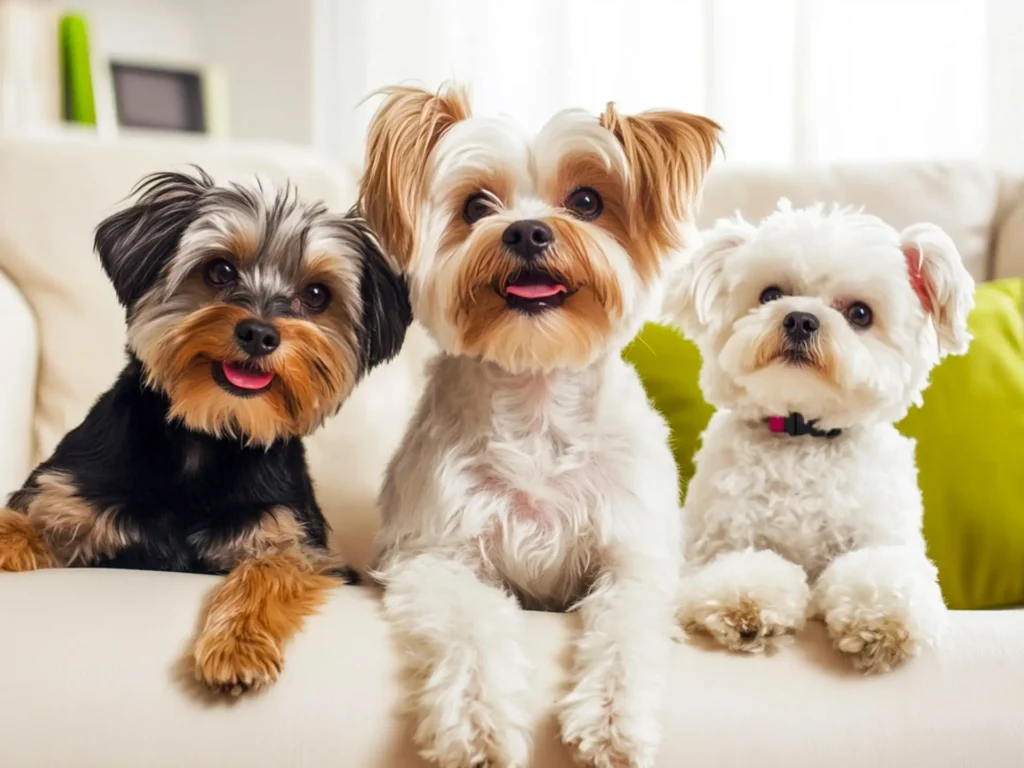
Choosing a canine companion isn’t just about picking the cutest pup; it’s about finding a dog whose size, temperament, and care requirements fit seamlessly into your life. Below is a practical guide to help first-time owners decide among small dogs, medium-sized dogs, apartment-friendly breeds, non-shedding dogs, and low-maintenance canines. Each category offers distinct advantages—and a few trade-offs—so you can choose wisely for a long, happy partnership.
Small Breeds
- Examples: Shih Tzu, Bichon Frise, Papillon
- Why Consider Them: Perfect for smaller living spaces, often cost less to feed, and can be easier to transport.
- Keep in Mind: Despite their petite size, small dogs still need training, socialization, and regular vet care to stay healthy and well-behaved.
Medium-Sized Breeds
- Examples: Beagle, Bulldog, Miniature Schnauzer
- Why Consider Them: A balanced choice if you want a dog that isn’t too big or too small. Many medium breeds adapt well to varied lifestyles, from suburban homes to smaller apartments—provided they get enough exercise.
- Keep in Mind: Energy levels can vary greatly in this size range; a Bulldog might need only moderate walks, whereas a Beagle could require more daily activity.
Apartment-Friendly Breeds
- Examples: French Bulldog, Pug, Cavalier King Charles Spaniel
- Why Consider Them: They typically have lower energy requirements and can thrive in compact living spaces. Their quieter natures also help if you have close neighbors.
- Keep in Mind: “Apartment-friendly” doesn’t mean “couch potato.” These dogs still benefit from daily strolls and mental stimulation to avoid boredom.
Non-Shedding (Hypoallergenic) Breeds
- Examples: Poodle, Bichon Frise, Havanese
- Why Consider Them: They shed minimally and produce fewer allergens, making them appealing for allergy-prone owners.
- Keep in Mind: Low-shedding dogs often require more grooming—regular haircuts or brushing sessions—to keep their coats healthy and tangle-free.
Low-Maintenance Dogs
- Examples: Greyhound, Whippet, Bulldog
- Why Consider Them: Often sporting short coats that need minimal grooming and calmer temperaments that suit busy households.
- Keep in Mind: “Low maintenance” doesn’t mean zero effort. All dogs need consistent feeding, vet check-ups, and at least moderate exercise—so ensure you can meet their basic needs.
In essence, the right breed depends on your home environment, energy level, and personal preferences. Small breeds work well for tighter spaces, while medium dogs suit owners wanting a balance of size and manageability. Apartment-friendly pups can adapt to urban life—though they still crave walks—while non-shedding options keep fur cleanup to a minimum at the cost of extra grooming.
Finally, low-maintenance dogs can fit into busy lifestyles as long as you respect their fundamental needs for care and activity. By weighing these factors, you’ll set yourself up for a rewarding, long-lasting relationship with your new furry friend.
Worst Dog Breeds for First-Time Owners
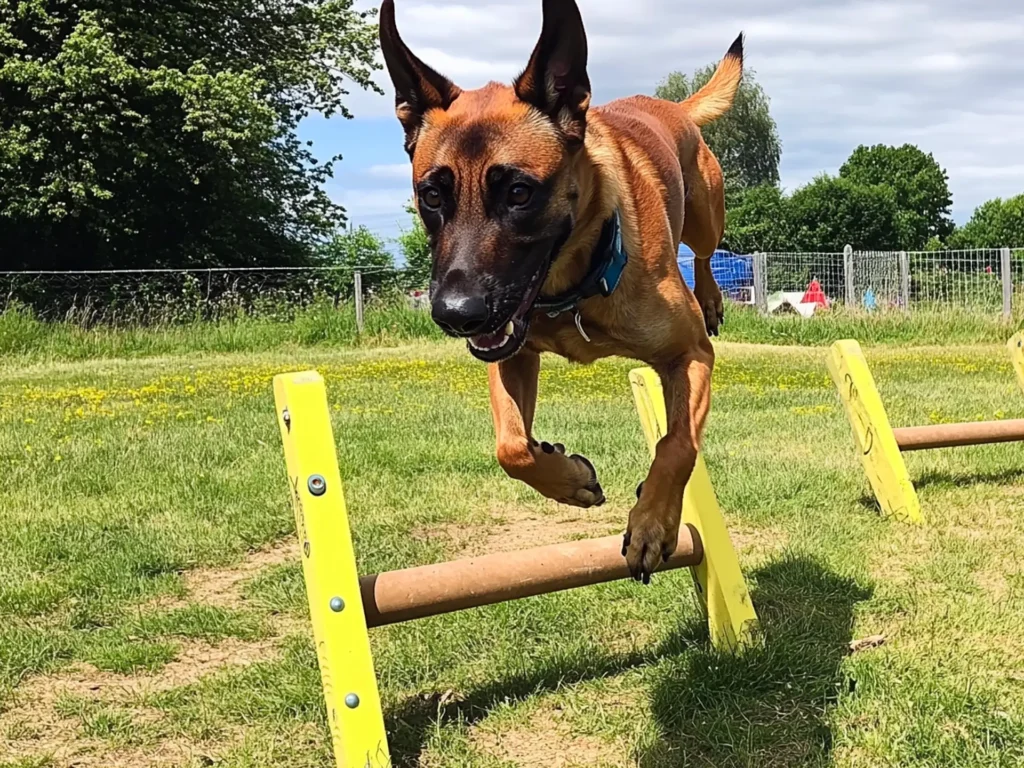
While every dog can be trained with patience and love, some breeds present significant challenges for first-timers due to high exercise demands, complex grooming needs, or intense temperaments. Examples might include:
- Belgian Malinois: Exceptionally intelligent and energetic, they need experienced owners who can provide rigorous physical and mental stimulation.
- Chow Chow: Known for strong-willed behavior, requiring an owner with firm but positive training methods.
- Rottweiler: Can be wonderful family dogs but need consistent, structured training and socialization from puppyhood.
- Akita: Strong, independent temperament and protective instincts can be difficult for novices.
If you’re new to dog ownership, think carefully before adopting a breed that’s known for being high-maintenance or challenging. Specialized care, training classes, and expert handling are often necessary to ensure these breeds thrive.
FAQs
Below are common questions prospective dog owners ask about selecting the best dog breeds for first-time owners.
Is It Better to Adopt a Puppy or an Adult Dog for Your First Time?
If you’re new to dog ownership, adopting an adult dog can be a smoother start—many already have basic training and are calmer than puppies. However, puppies allow you to mold their behavior from the start. Think about your lifestyle, patience for training, and available time. Whichever you choose, consistent routines and positive reinforcement help ensure a well-adjusted companion.
What Are the Typical Monthly Costs for First-Time Dog Owners?
Monthly expenses vary by breed size and location, but expect to budget for food, grooming, vet check-ups, and preventive treatments (e.g., flea and tick medication). Smaller breeds may cost $50–$100 per month, while larger breeds could run $100–$200. Unexpected vet bills or emergency care may arise, so it’s wise to set aside funds or invest in pet insurance.
How Can You Balance a Full-Time Job with Owning a Dog?
Consistency and planning are key. Choose a breed with moderate exercise needs, and establish a daily routine. Consider hiring a dog walker or using a reputable doggy daycare if you’ll be away for extended periods. Interactive toys and puzzle feeders provide mental stimulation when you’re not around, ensuring your dog stays engaged and happy throughout the day.
Which Training Methods Work Best for First-Time Owners?
Positive reinforcement—using praise, treats, or play—is widely recommended. It reinforces good behavior without resorting to harsh corrections. Clicker training can also be effective, offering clear signals your dog can quickly learn. Avoid punishment-based methods, as they can damage trust. If you’re unsure, sign up for obedience classes or consult a certified trainer for personalized guidance.
What Are the First Steps After Bringing Your New Dog Home?
Give your dog a calm, quiet space to explore. Provide a comfy bed or crate, along with water and familiar-smelling items (like blankets). Schedule a vet appointment within the first week for a checkup and vaccinations. Begin establishing a consistent feeding and bathroom routine right away, and gradually introduce your dog to household members and other pets.
Which Dog Breed Is the Easiest To Train for a First-Time Owner?
Breeds like the Golden Retriever, Labrador Retriever, and Poodle are often considered easiest to train. They are intelligent, people-oriented, and typically respond well to positive reinforcement. Beginner owners find these breeds more forgiving of minor mistakes, helping establish good habits early.
Can a First-Time Owner Handle a Larger Breed?
Yes, but choose wisely. Breeds like the Golden Retriever and Greyhound are larger yet beginner-friendly due to their gentle temperaments and moderate exercise needs. Always ensure you have enough space and a commitment to regular training and socialization.
Conclusion
Getting a dog for the very first time is as thrilling as it is nerve-wracking—but that spark of excitement you feel right now is exactly why it’s worth doing your homework. It’s not just about picking a name or the perfect bed; it’s about understanding a breed’s quirks, energy levels, and care requirements so you can both thrive together.
Picture it: you come home after a long day, and there’s a tail-wagging ball of happiness waiting at the door. That’s the moment every dog lover lives for—and it’s entirely possible, no matter which breed you choose, if you commit to patient training, routine vet visits, and genuine, everyday affection. Yes, it’ll take time and a bit of trial and error. You might switch dog foods a few times or realize you need a sturdier leash after the first couple of walks. But those small learning curves build an unshakeable bond.
If you’re ever unsure, reach out. Chat with a trusted vet, local trainers, or friends who’ve been in your shoes. They’ll offer real-life tips that can’t be found in any breed description. Remember, having a dog is a two-way street: the more effort you invest in meeting their emotional and physical needs, the more love and loyalty you’ll get in return. Here’s to embracing the joys (and occasional messes) of first-time dog ownership—and to welcoming a loyal companion who’ll bring new life and laughter into your home.

